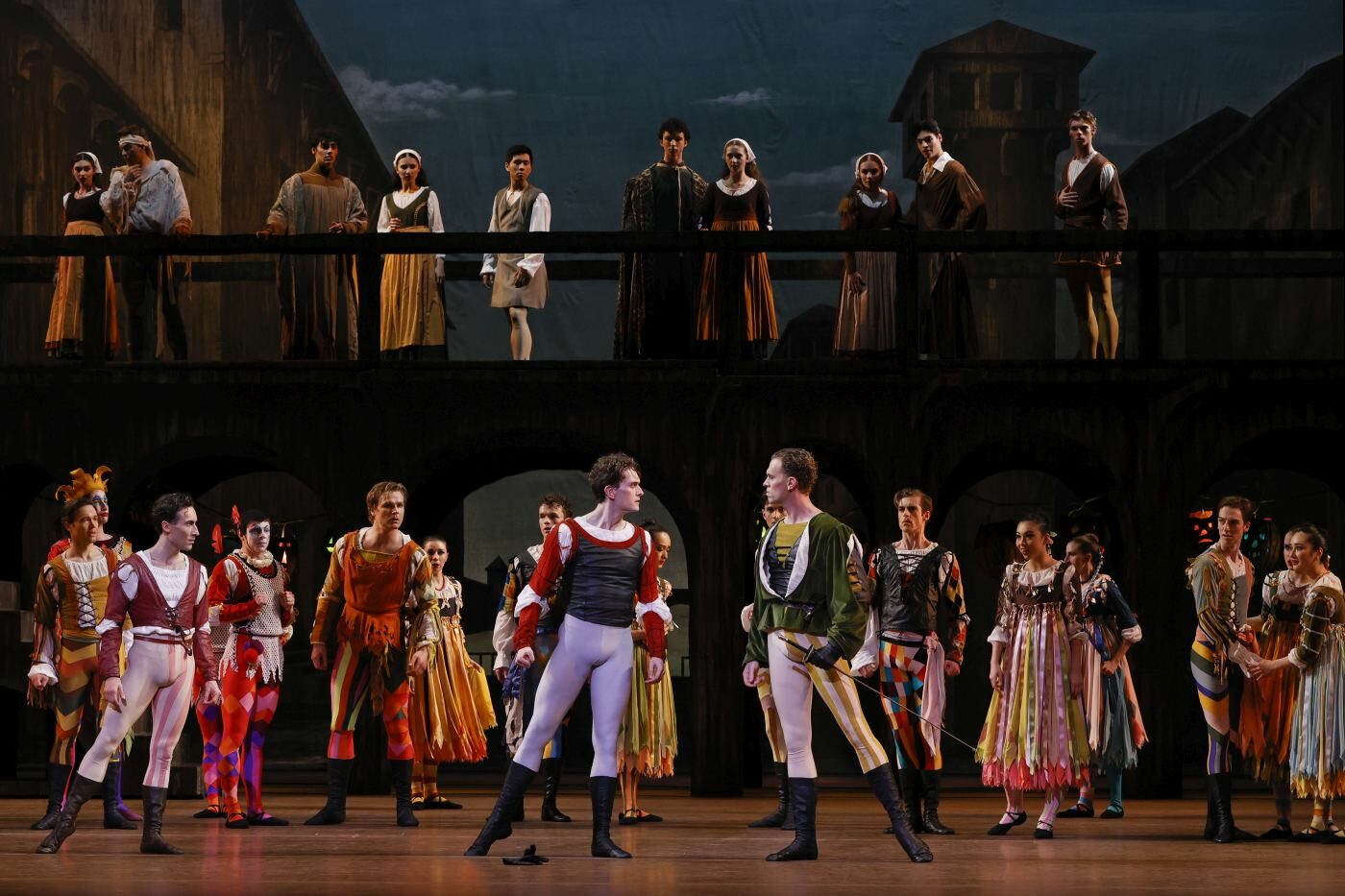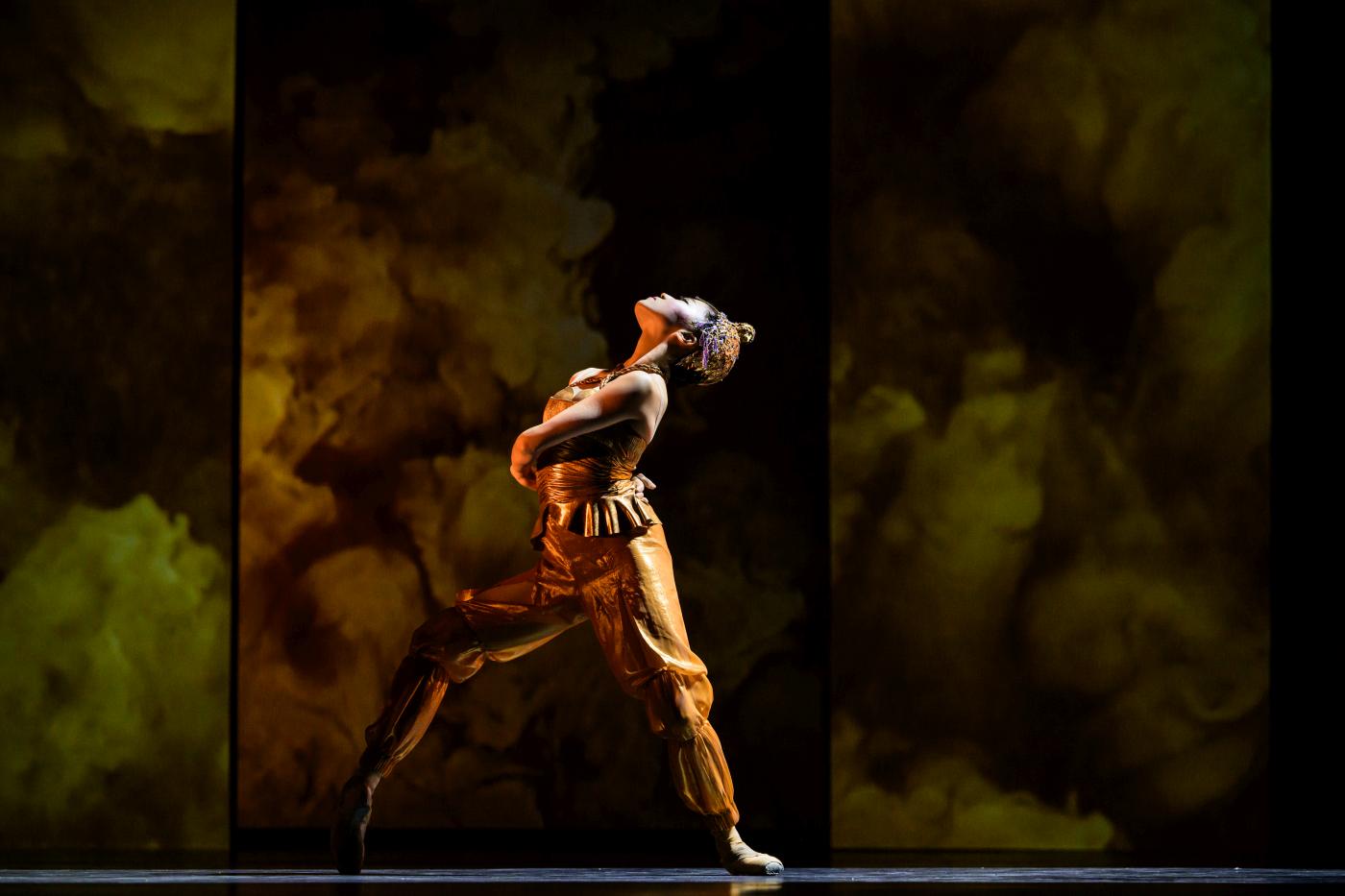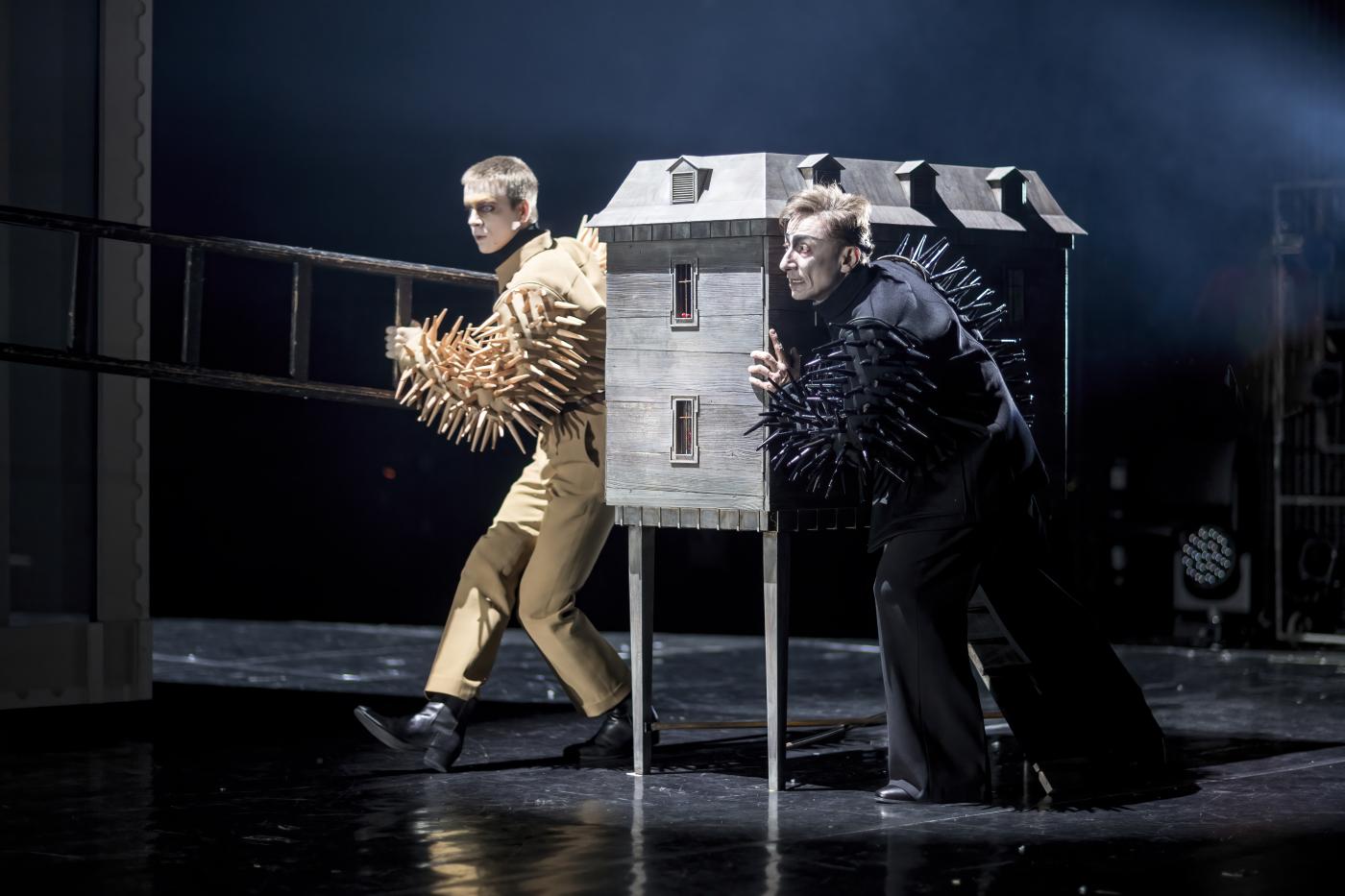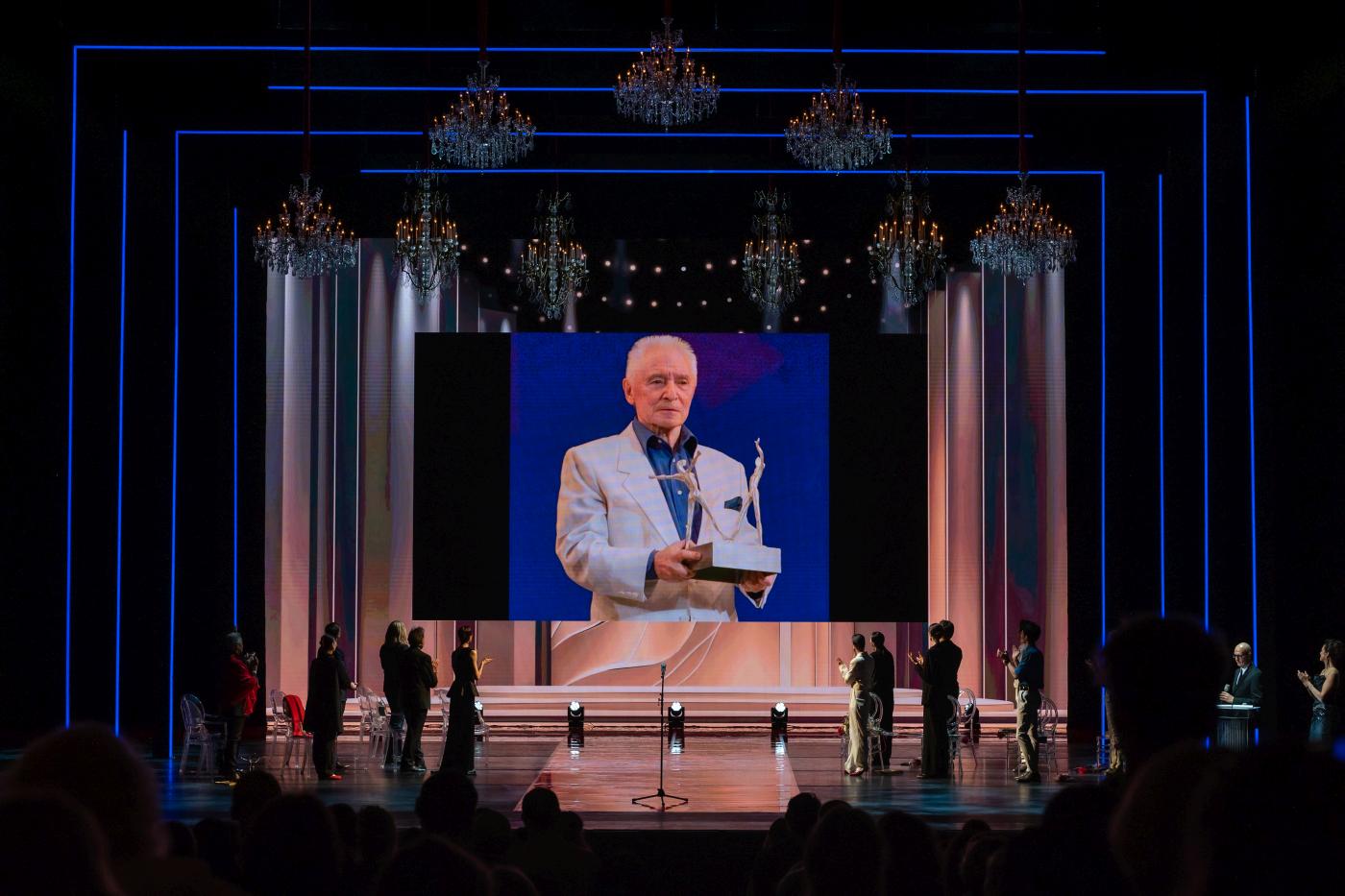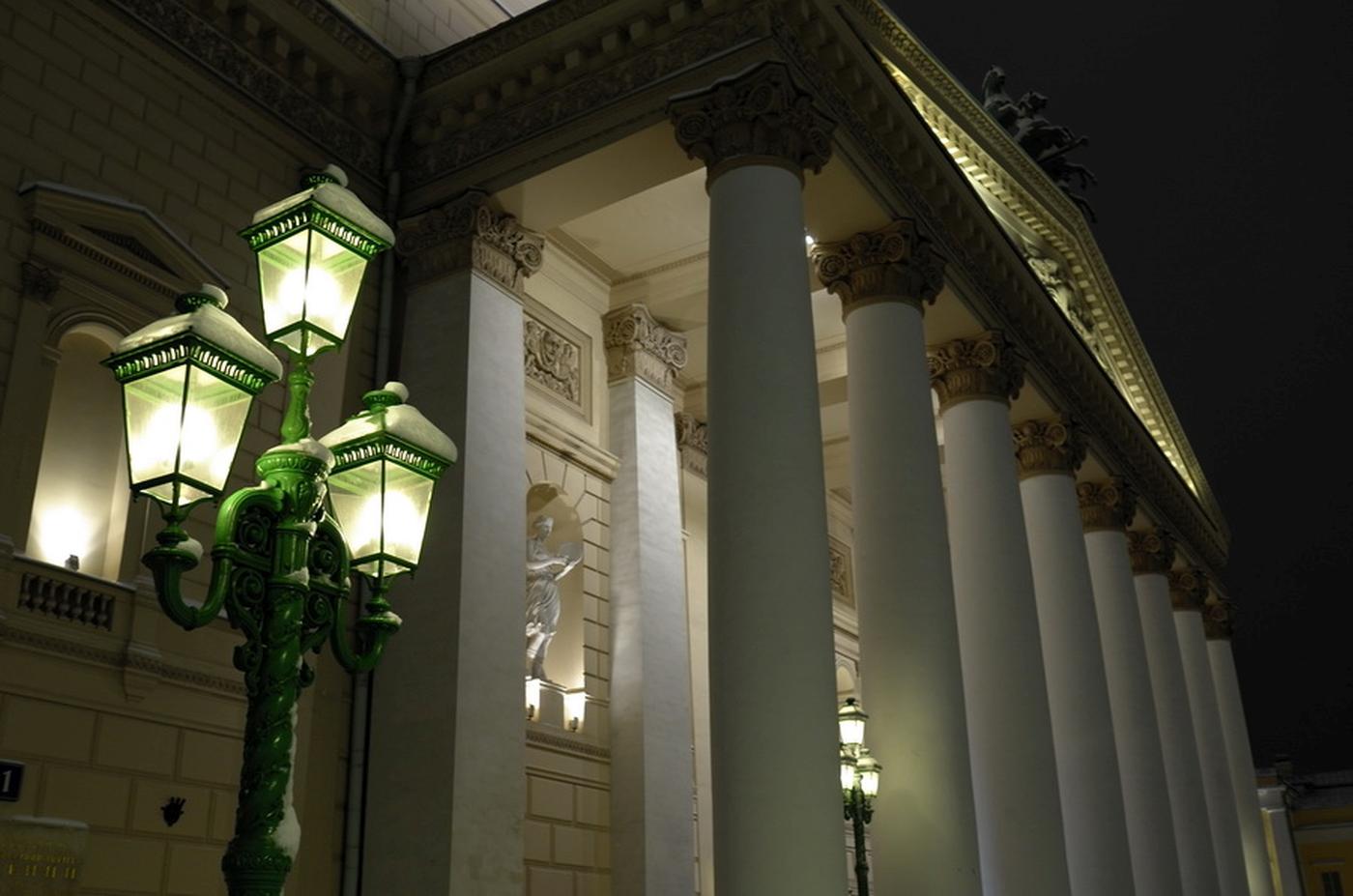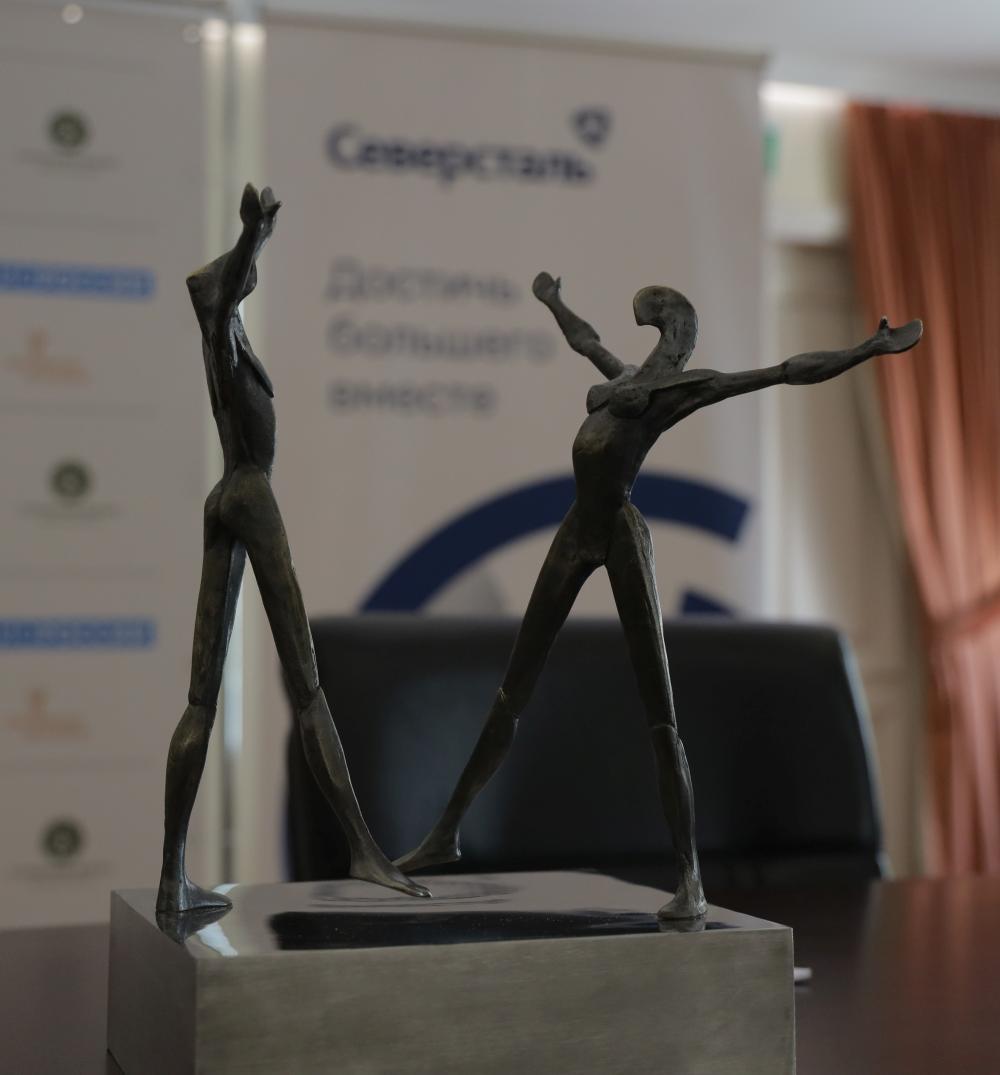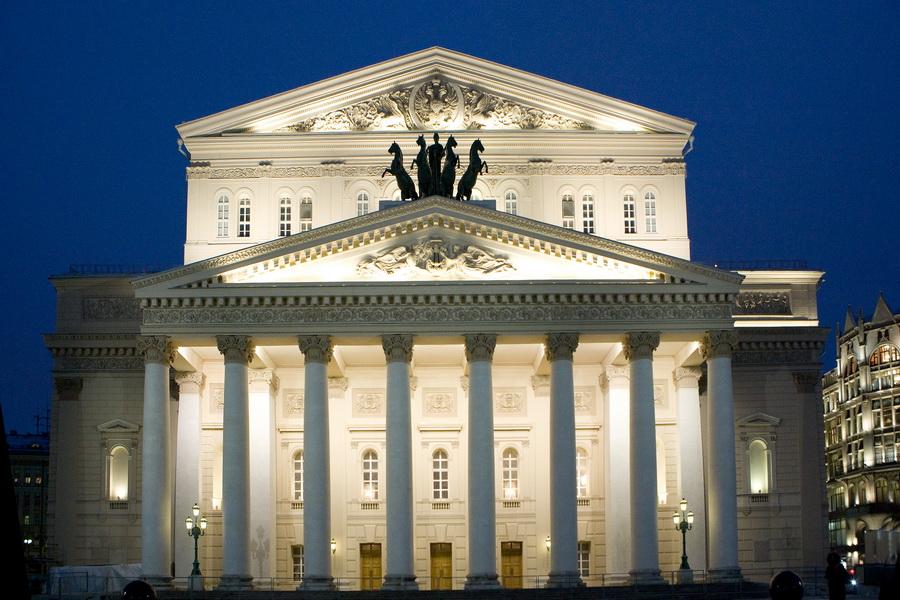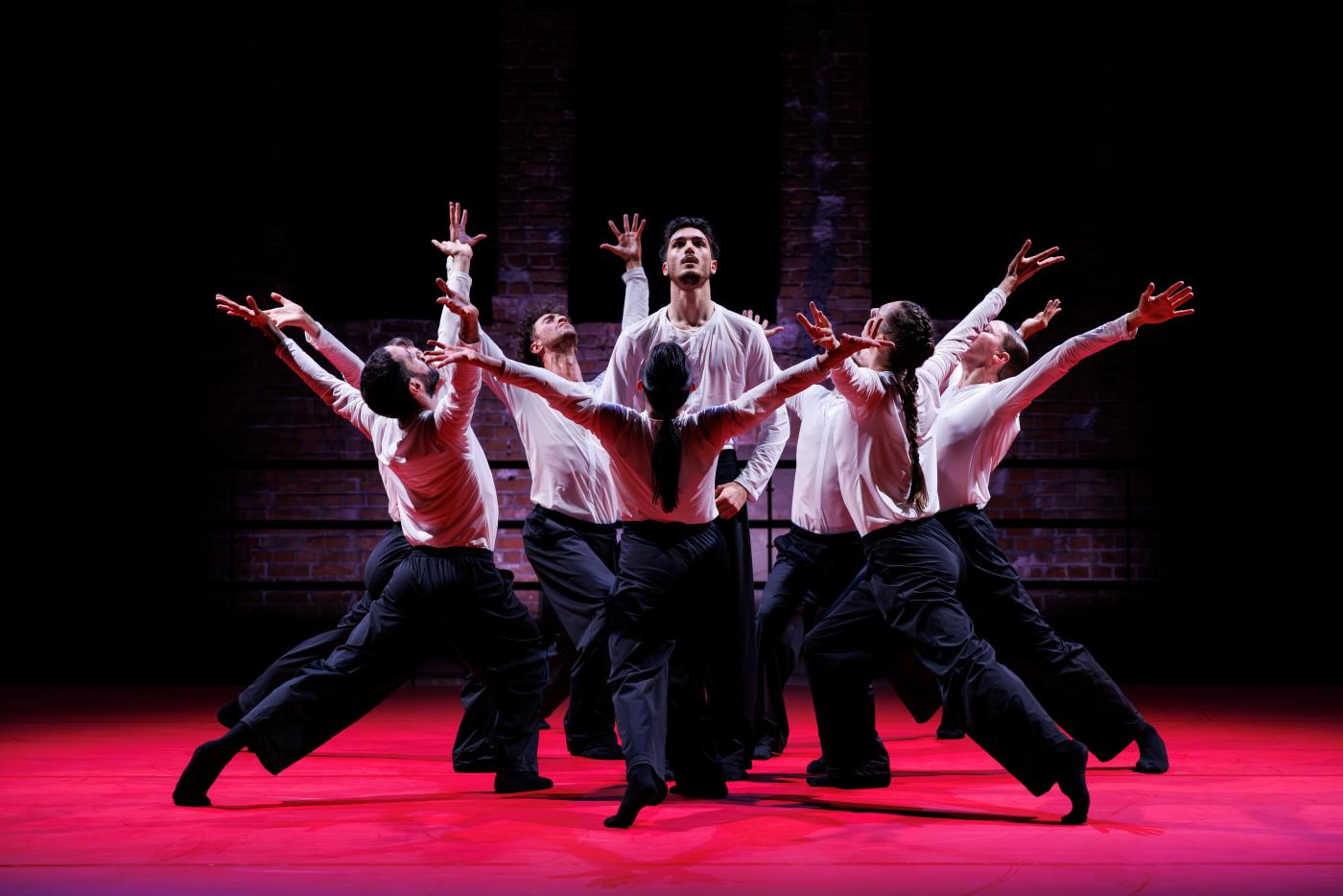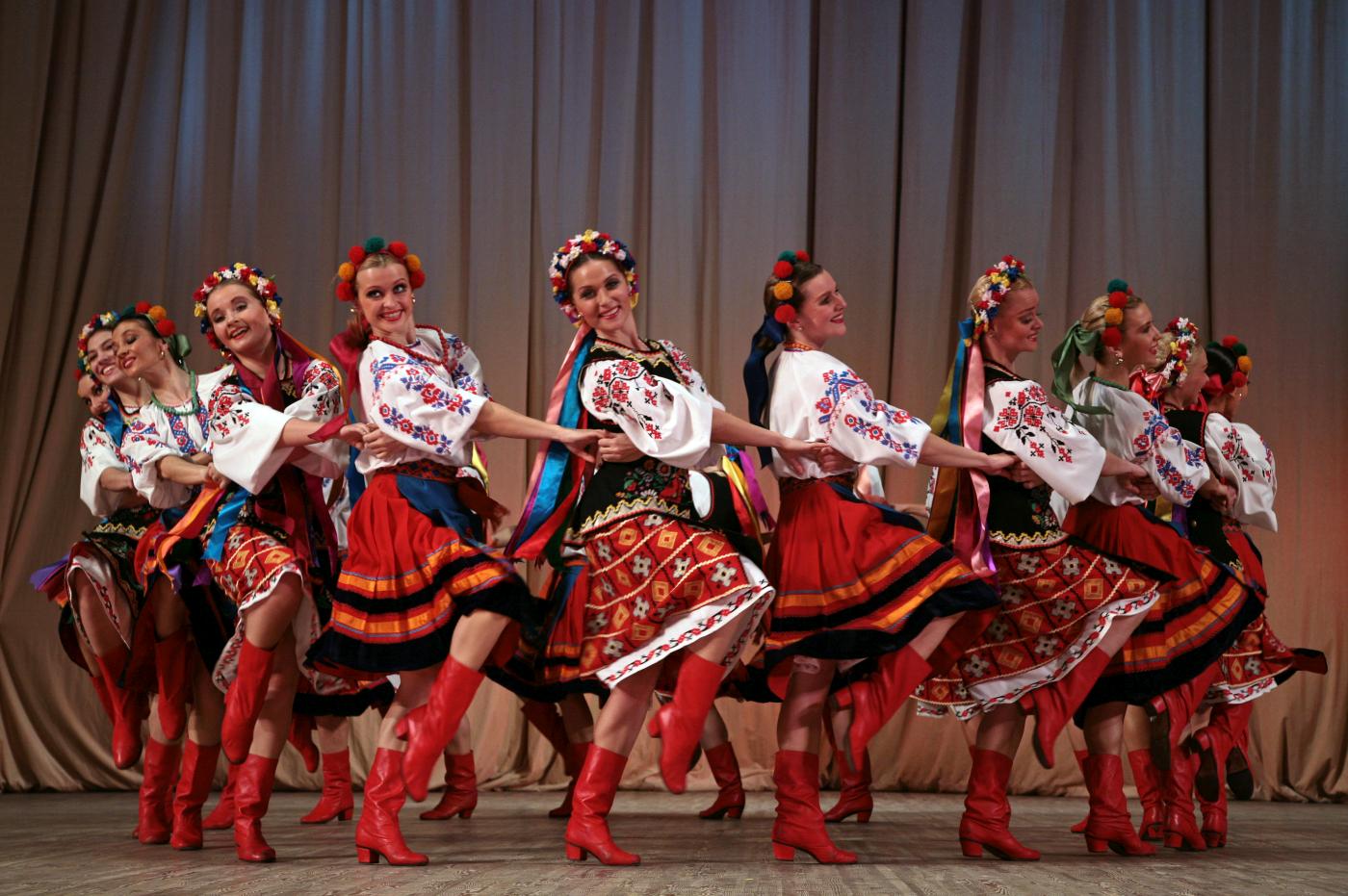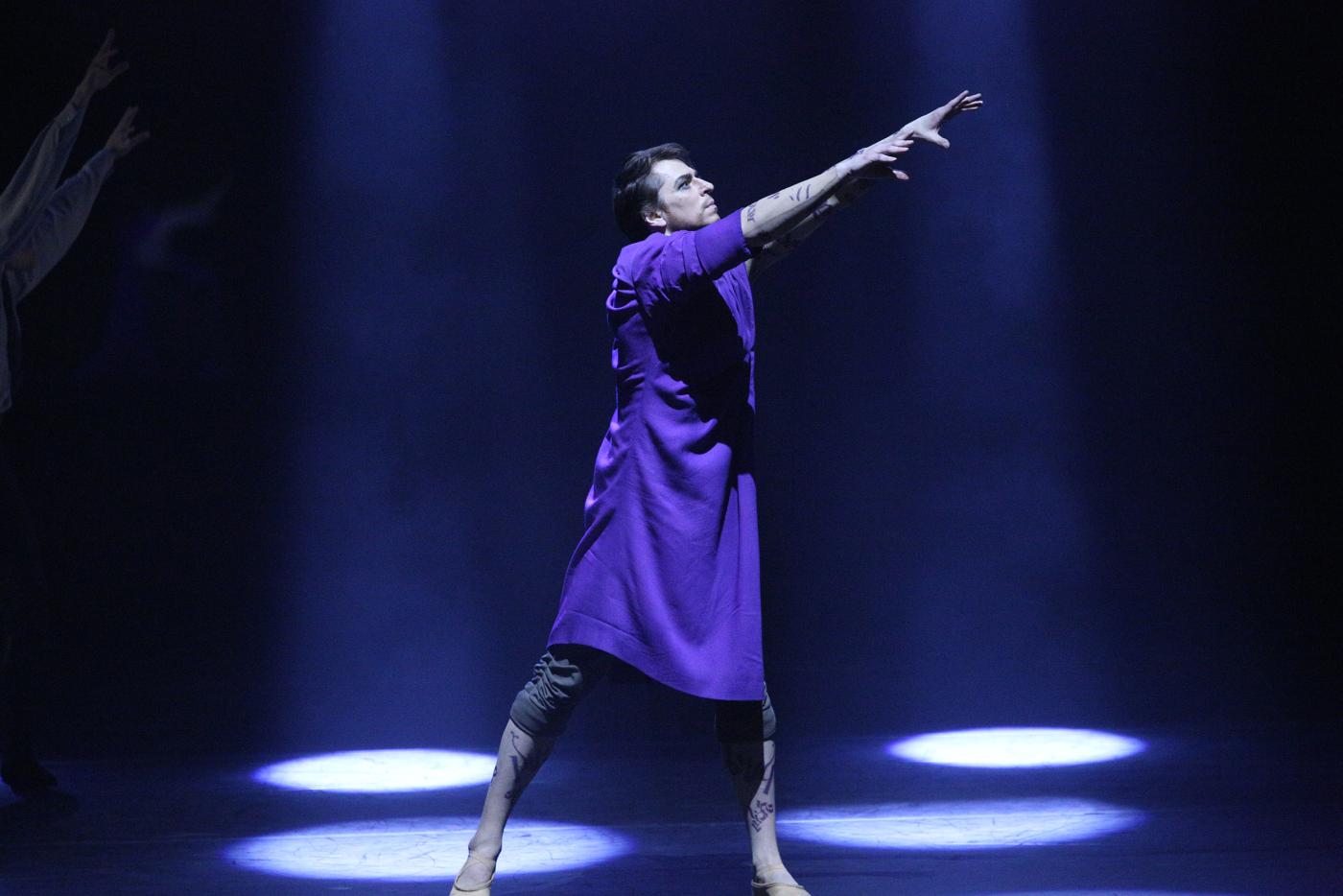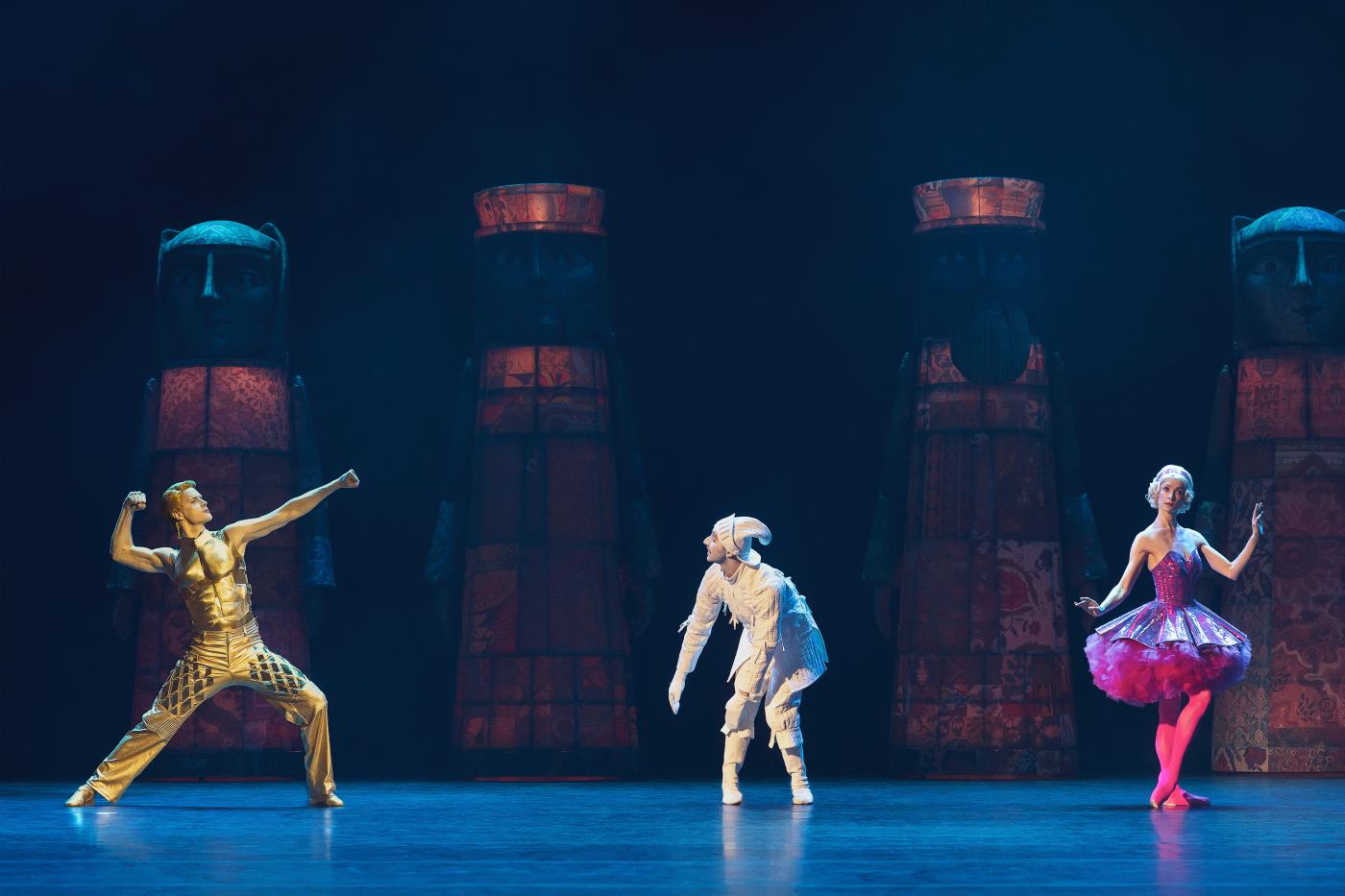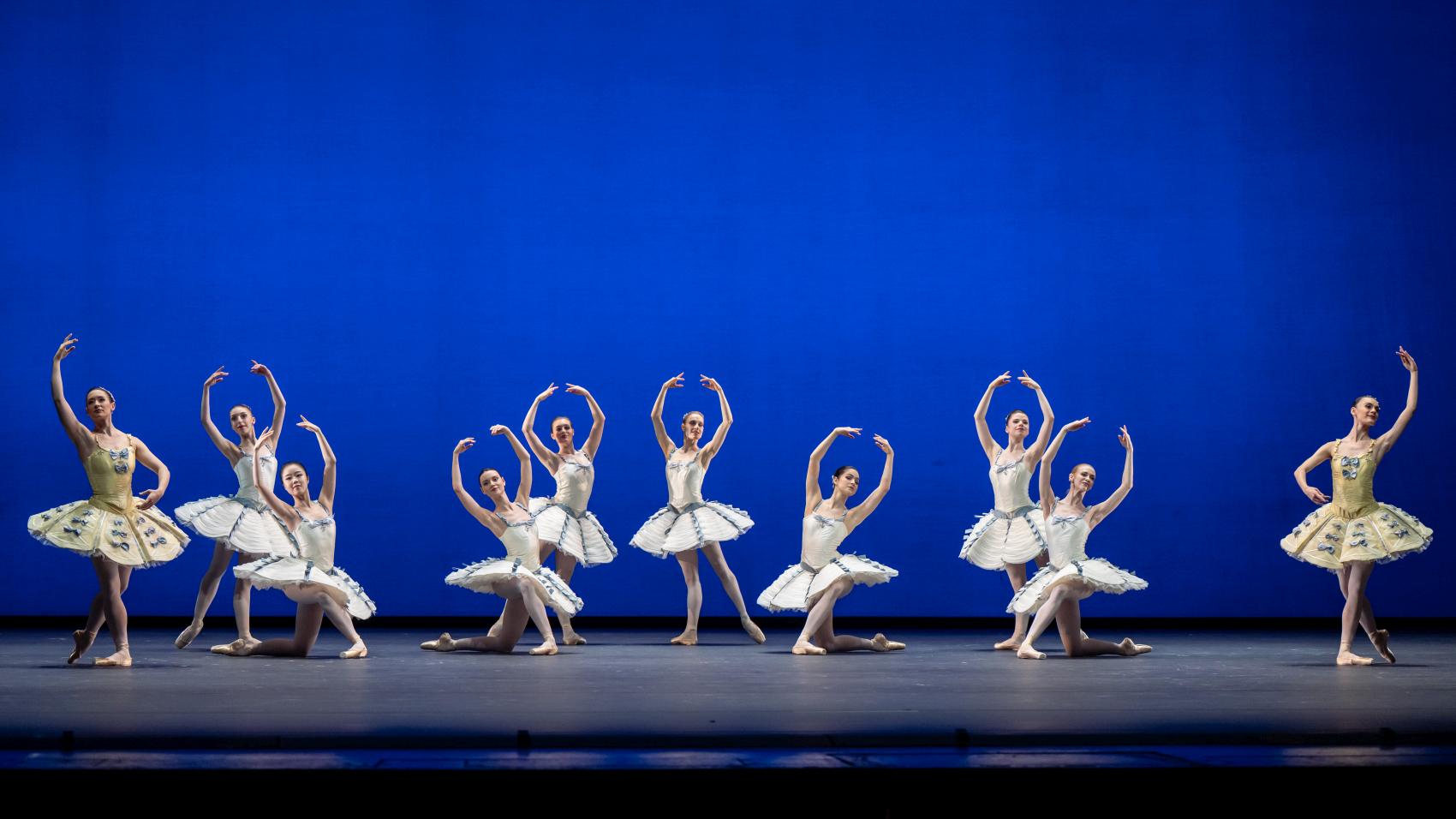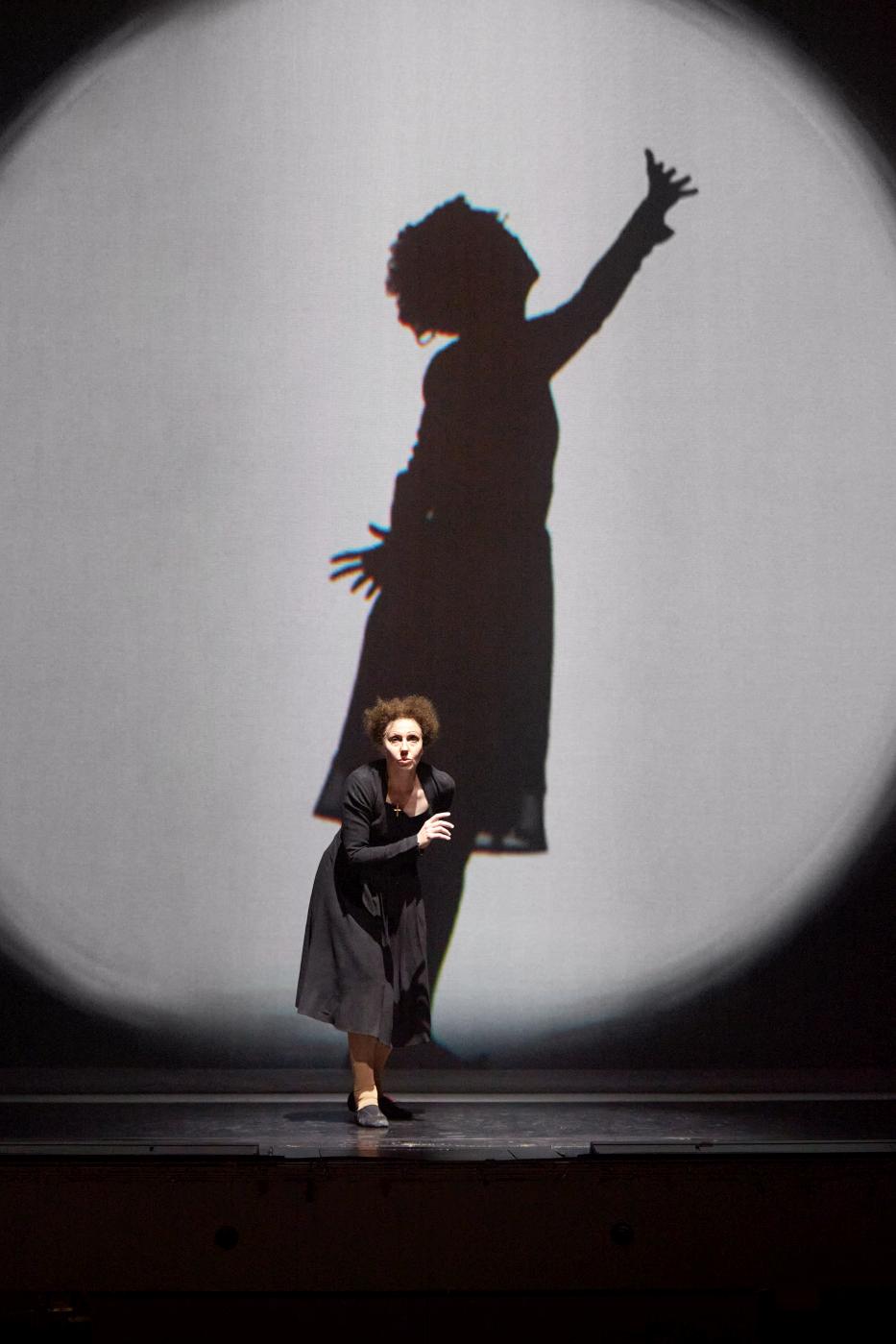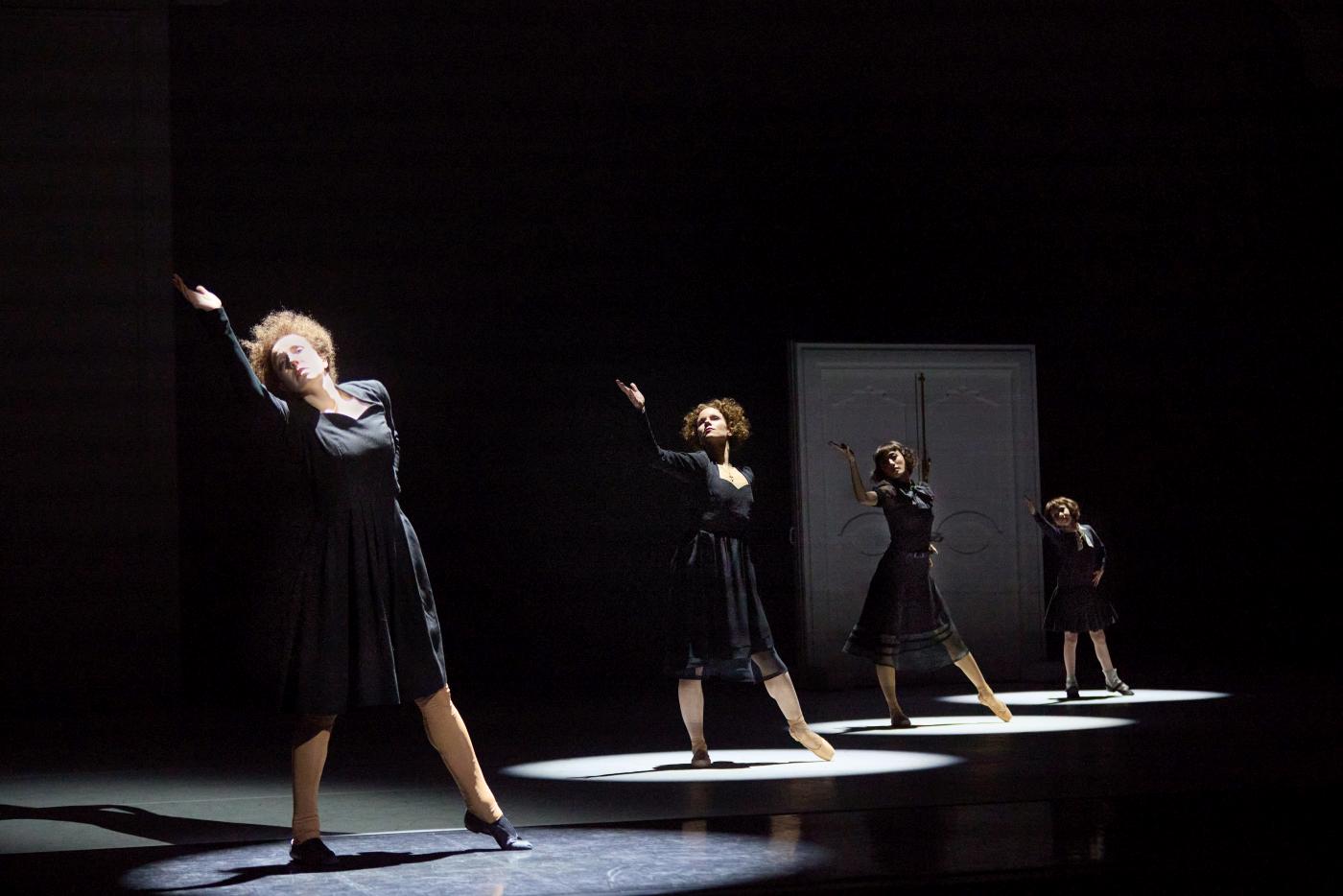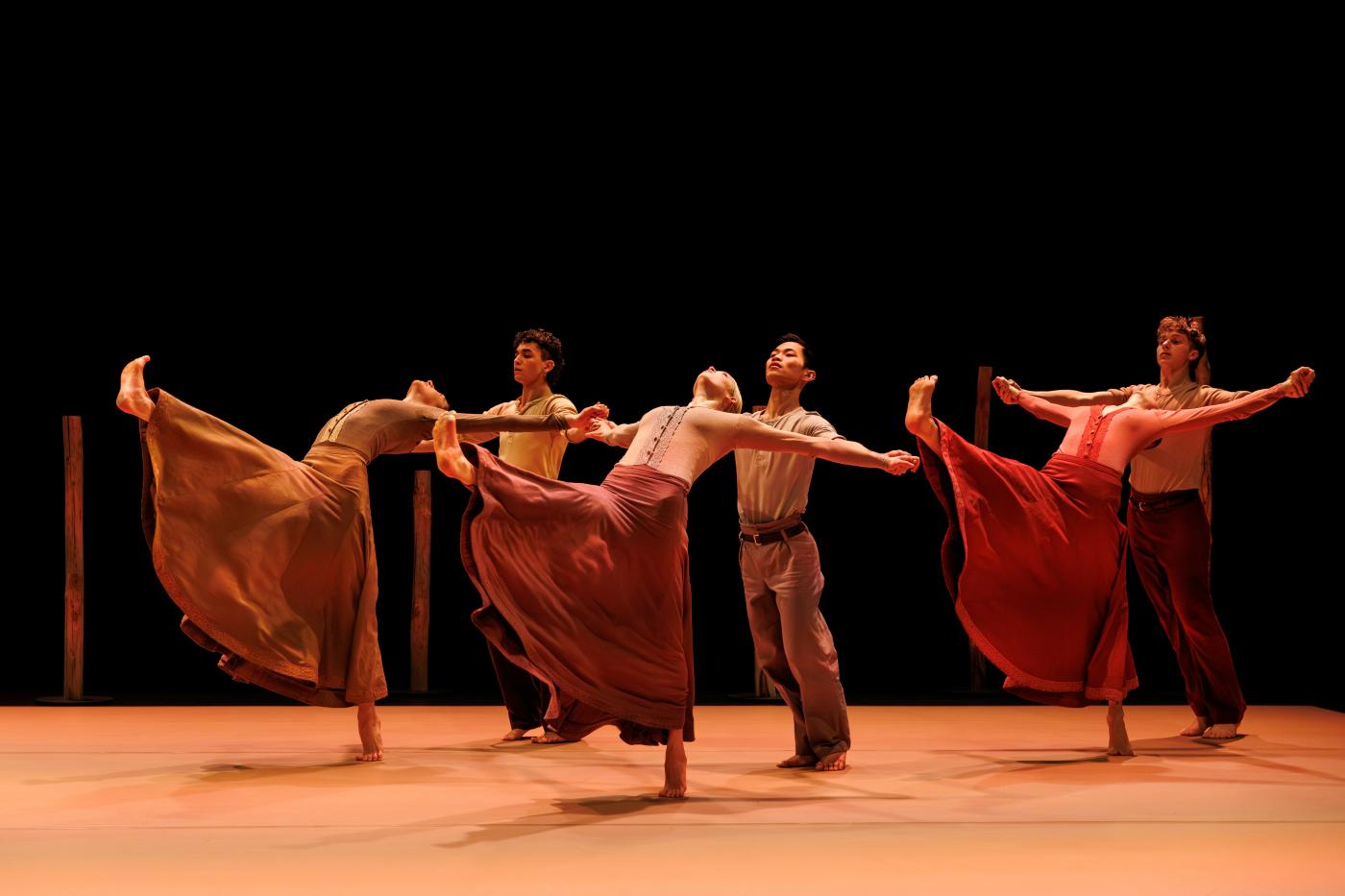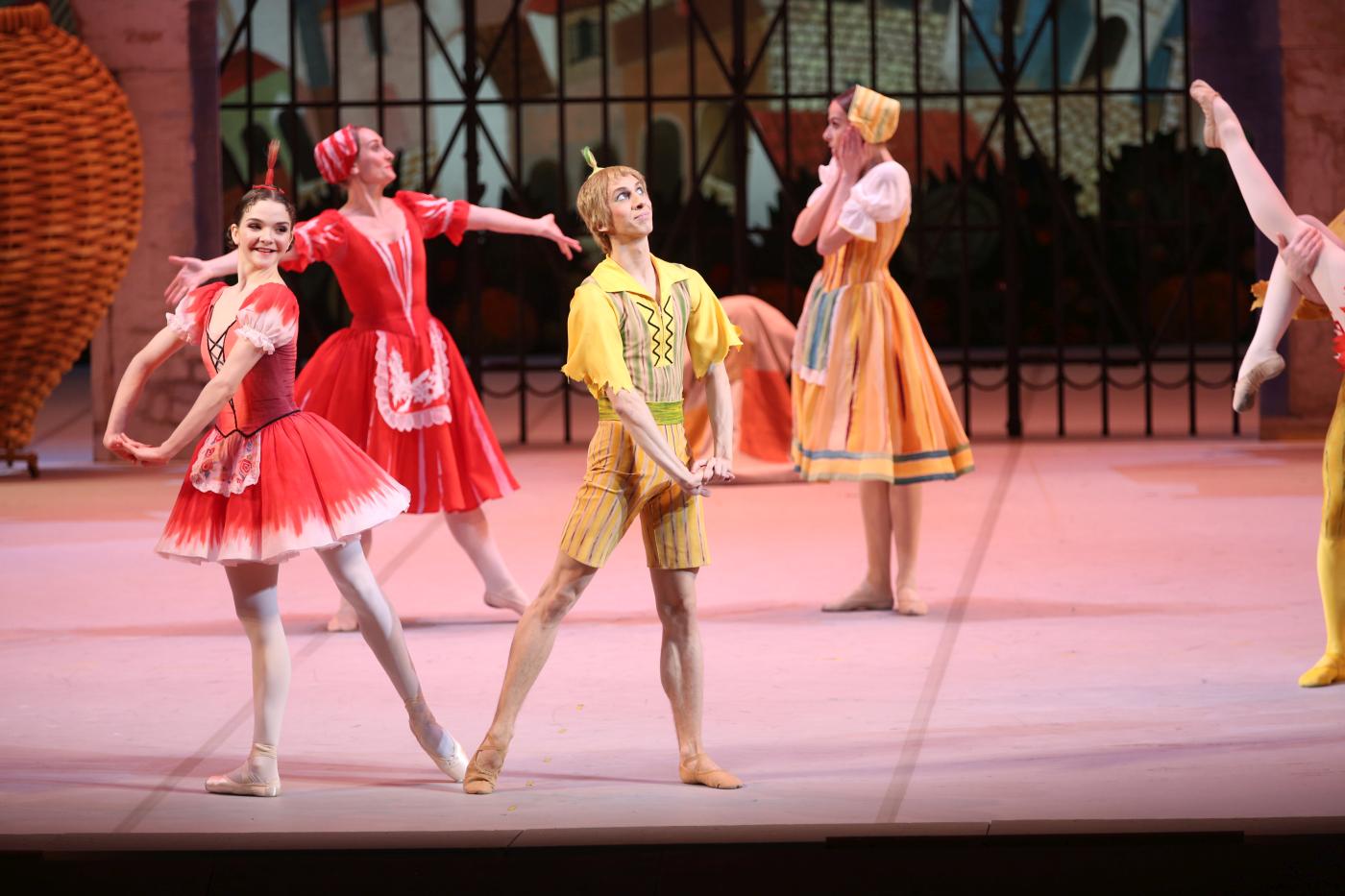A Recap
“Malditos Benditos”
Ballet of the State Theater Nuremberg
State Theater
Nuremberg, Germany
July 10, 2025
by Ilona Landgraf
Copyright © 2025 by Ilona Landgraf
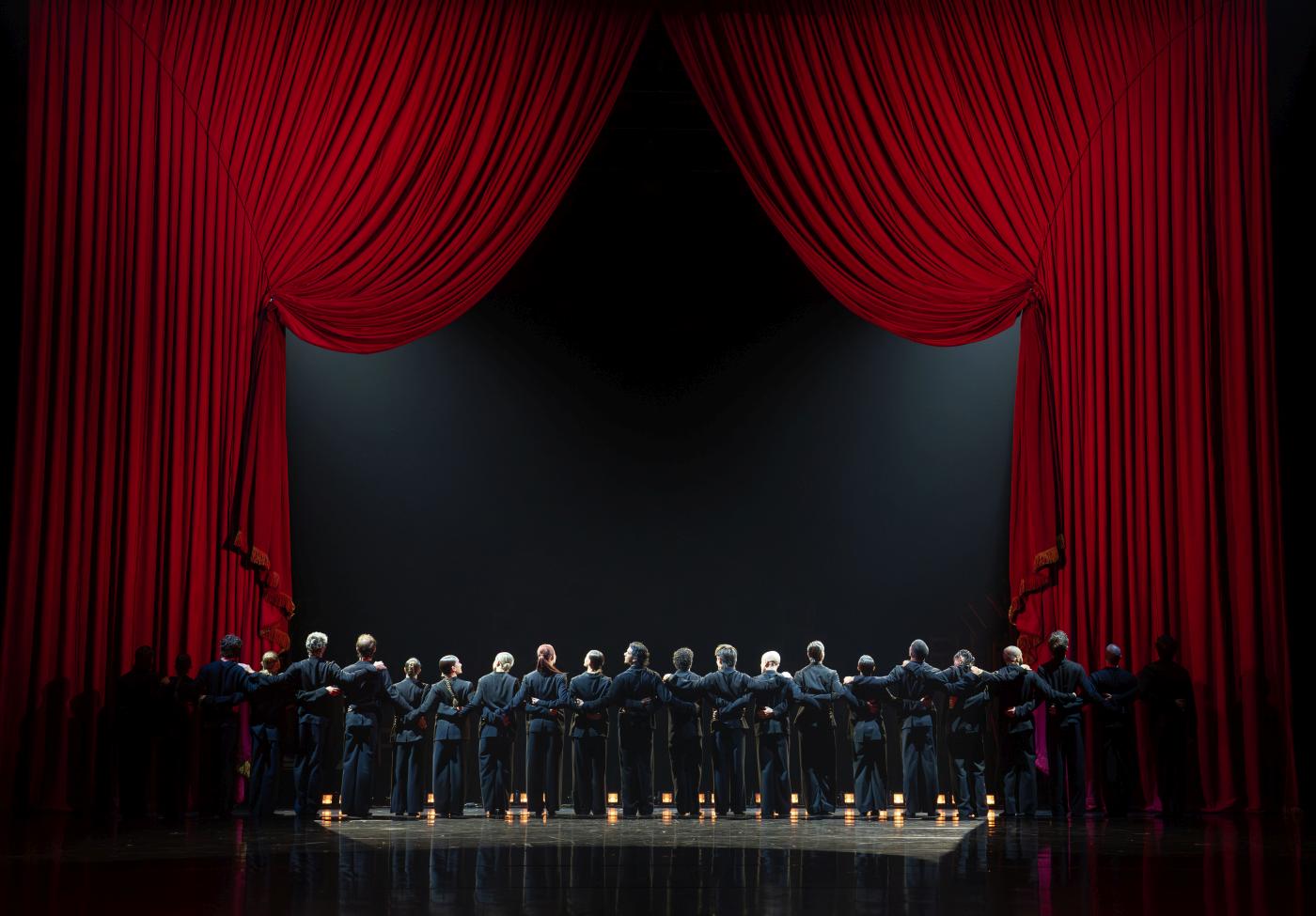 Malditos Benditos (“Damned Blessed Ones”) is Goyo Montero’s farewell piece to Nuremberg. After seventeen years as artistic director of the State Theater’s ballet company, the Spaniard will leave for the State Ballet Hanover this autumn to take up the reins Marco Goecke was forced to give up in 2023. Richard Siegal, director of the Cologne-based Ballet of Difference, will succeed Montero in Nuremberg and bring his dancers along. They will merge with their Nuremberg colleagues into the State Theater Nuremberg Ballet of Difference.
Malditos Benditos (“Damned Blessed Ones”) is Goyo Montero’s farewell piece to Nuremberg. After seventeen years as artistic director of the State Theater’s ballet company, the Spaniard will leave for the State Ballet Hanover this autumn to take up the reins Marco Goecke was forced to give up in 2023. Richard Siegal, director of the Cologne-based Ballet of Difference, will succeed Montero in Nuremberg and bring his dancers along. They will merge with their Nuremberg colleagues into the State Theater Nuremberg Ballet of Difference.
Malditos Benditos is the counterpart to Benditos Malditos, Montero’s first creation in Nuremberg in 2008. Many of the intervening twenty-five productions are reflected in Malditos Benditos. Applause blended into the medley of musical snippets and electronic noise as the black curtain rose. The black-suited dancers (costumes by Goyo Montero and Margaux Manns) bowed to the applause of an imaginary audience at the rear stage, framed by a bright red curtain.
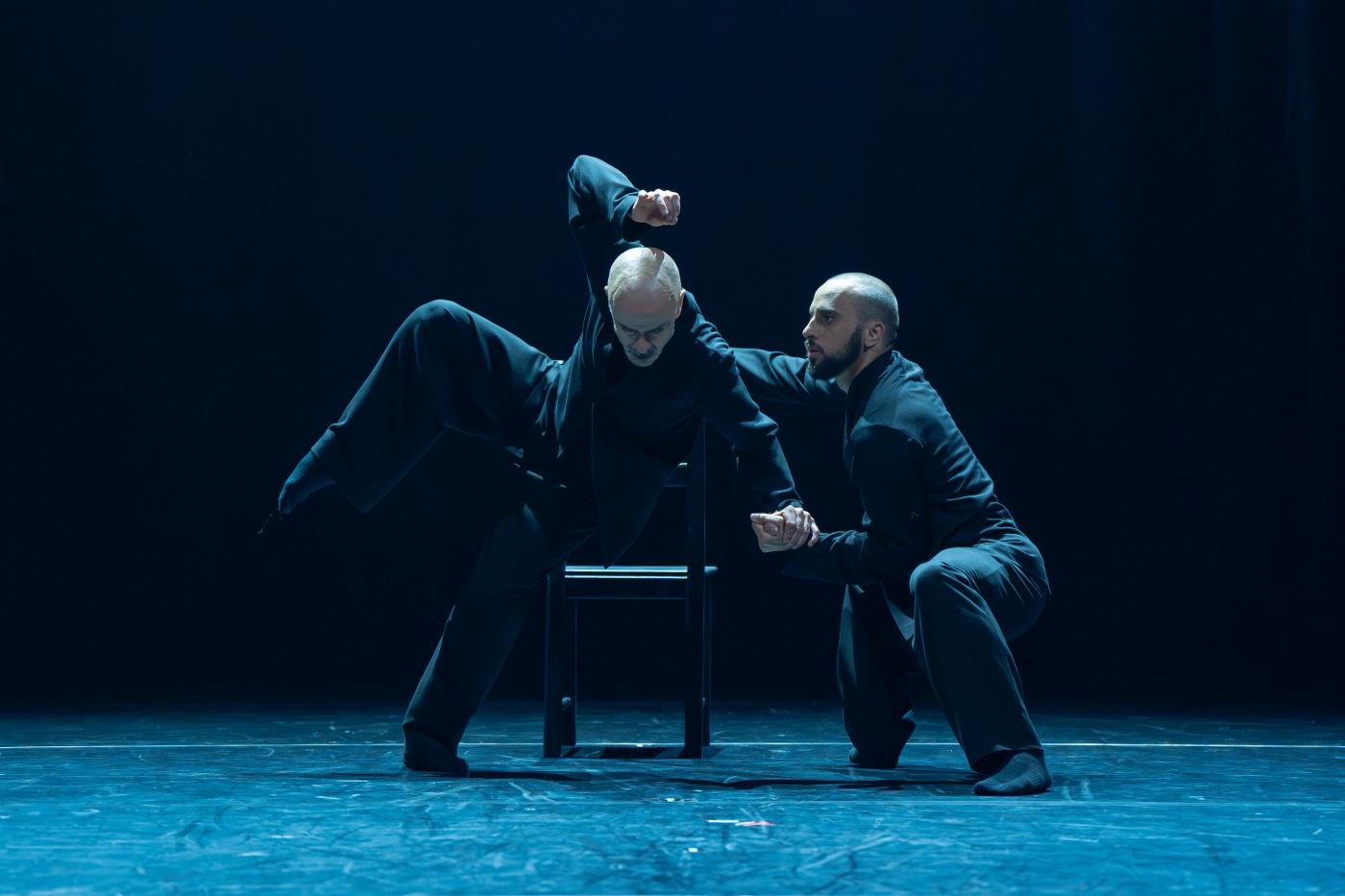
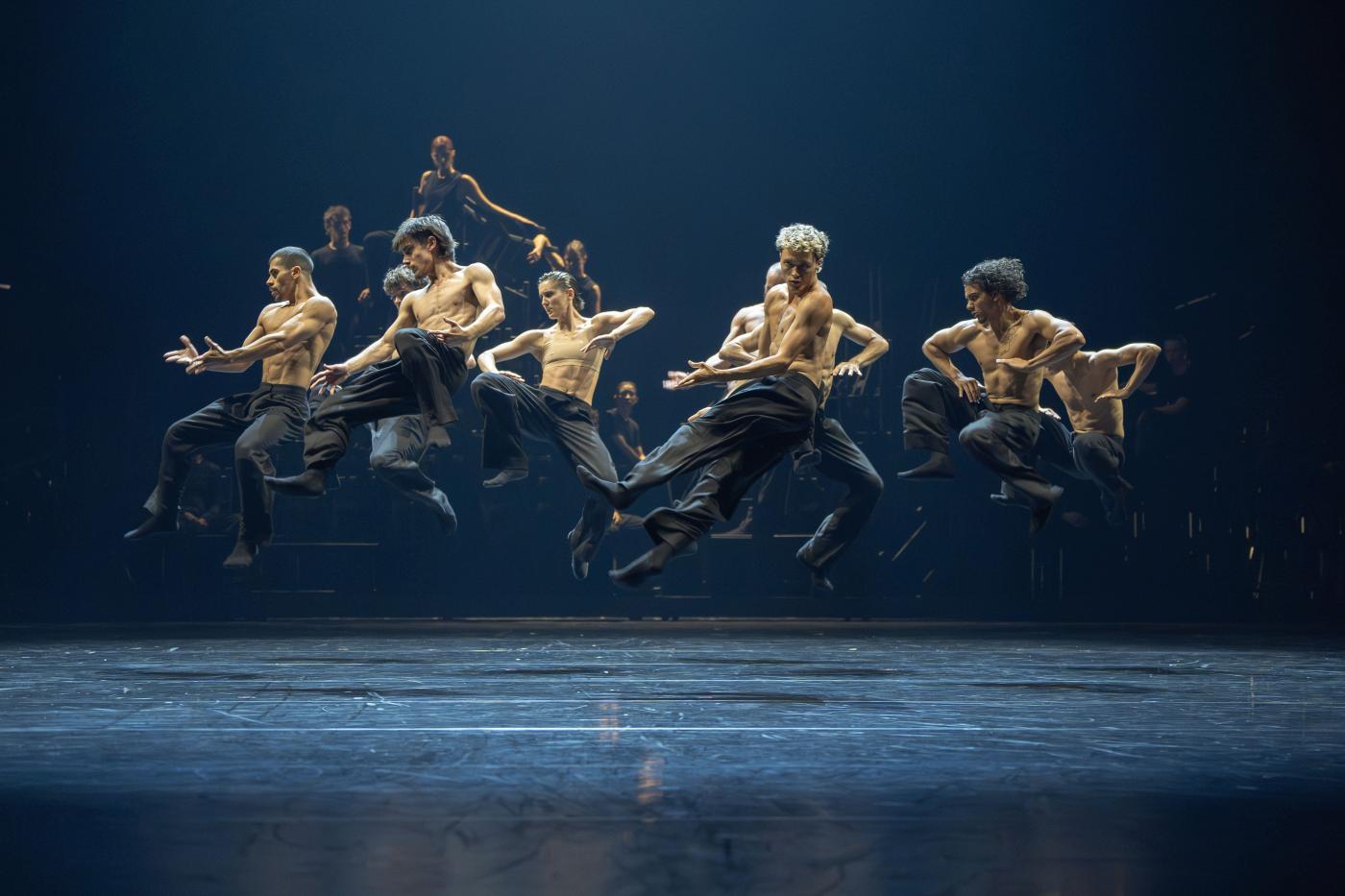 The lines of Joaquín Sabina’s poem Benditos Malditos (set to music by Montero’s longstanding collaborator, Owen Belton) accompanied one dancer as he stepped away from the curtain call as if performing in rewind. The following sixteen scenes were related to previous works and, with two exceptions, had new choreographies and contexts. The main connections to Benditos Malditos were the poems of Sabina, a Spanish musician and composer, whom Montero likened to Spain’s Bob Dylan. Montero incorporated many of Sabina’s poems in 2008 and used the five remaining poems for Malditos Benditos which Belton set to music.
The lines of Joaquín Sabina’s poem Benditos Malditos (set to music by Montero’s longstanding collaborator, Owen Belton) accompanied one dancer as he stepped away from the curtain call as if performing in rewind. The following sixteen scenes were related to previous works and, with two exceptions, had new choreographies and contexts. The main connections to Benditos Malditos were the poems of Sabina, a Spanish musician and composer, whom Montero likened to Spain’s Bob Dylan. Montero incorporated many of Sabina’s poems in 2008 and used the five remaining poems for Malditos Benditos which Belton set to music.
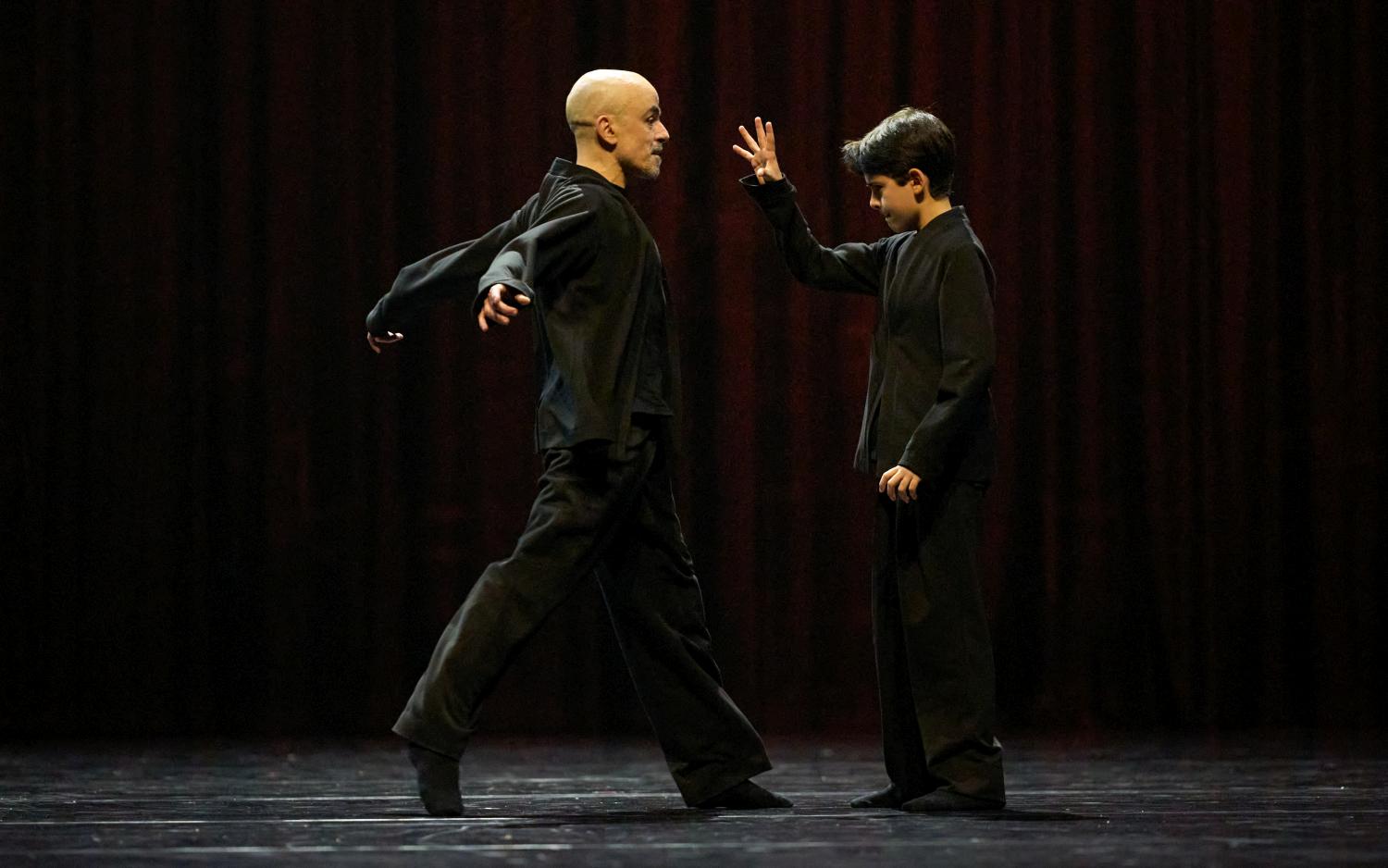
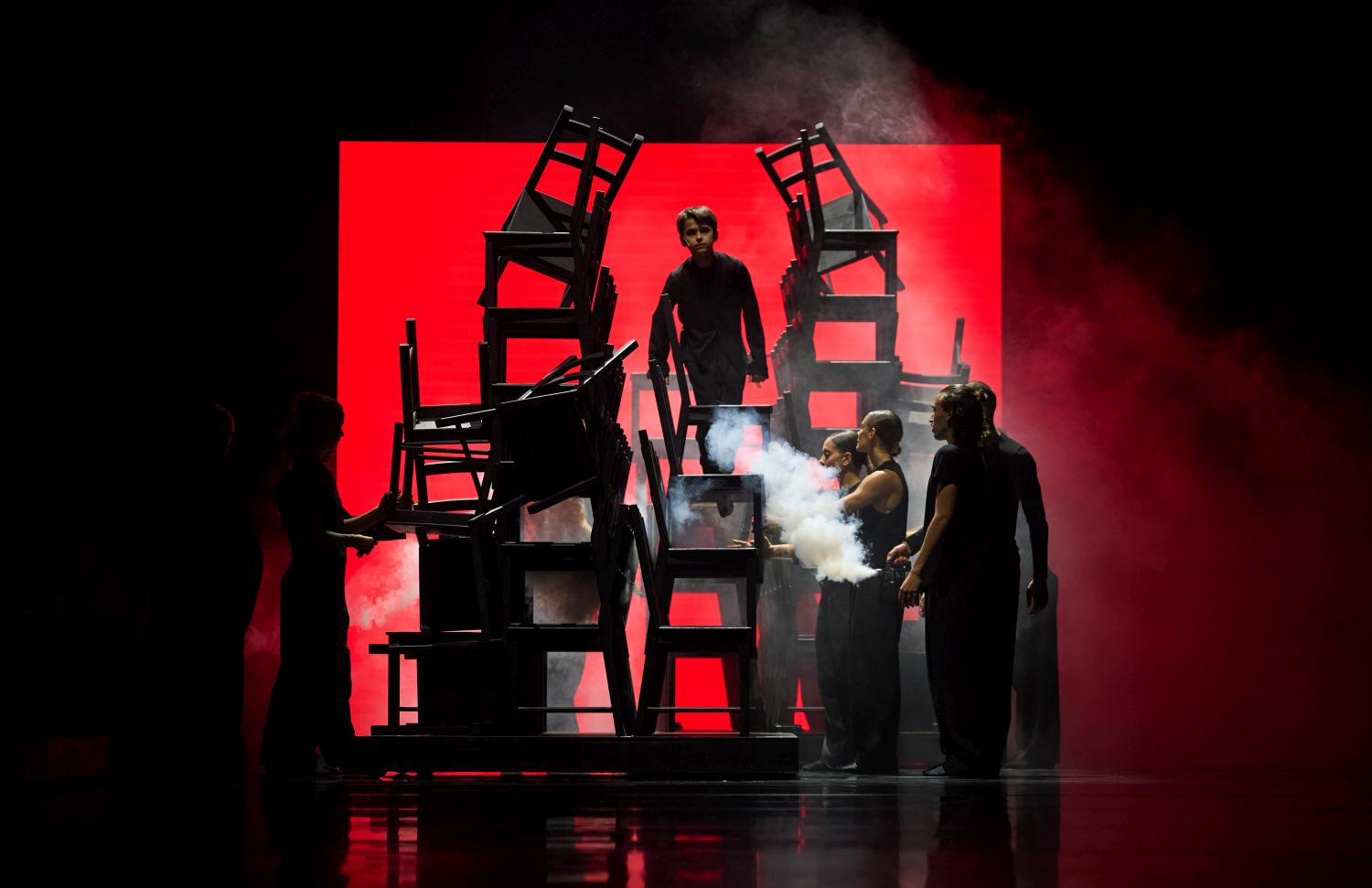 The score moreover included other compositions by Belton and music by Ludwig van Beethoven and Miguel Poveda. Tenor Martin Platz, standing on a chair amidst the dancers in one scene, sang a cantata by Johann Sebastian Bach. (At the premiere and on some evenings, Montero’s son Theo sang the cantata opposite his father, who joined the dancers.) One highlight was the penultimate scene, It’s Alright, Ma, set to the eponymous song by Bob Dylan. Each of the company’s twenty-four dancers had solos in this song, and everyone went full throttle as if performing for the last time. A purple curtain provided a gala atmosphere, which some slapstick lightened.
The score moreover included other compositions by Belton and music by Ludwig van Beethoven and Miguel Poveda. Tenor Martin Platz, standing on a chair amidst the dancers in one scene, sang a cantata by Johann Sebastian Bach. (At the premiere and on some evenings, Montero’s son Theo sang the cantata opposite his father, who joined the dancers.) One highlight was the penultimate scene, It’s Alright, Ma, set to the eponymous song by Bob Dylan. Each of the company’s twenty-four dancers had solos in this song, and everyone went full throttle as if performing for the last time. A purple curtain provided a gala atmosphere, which some slapstick lightened.
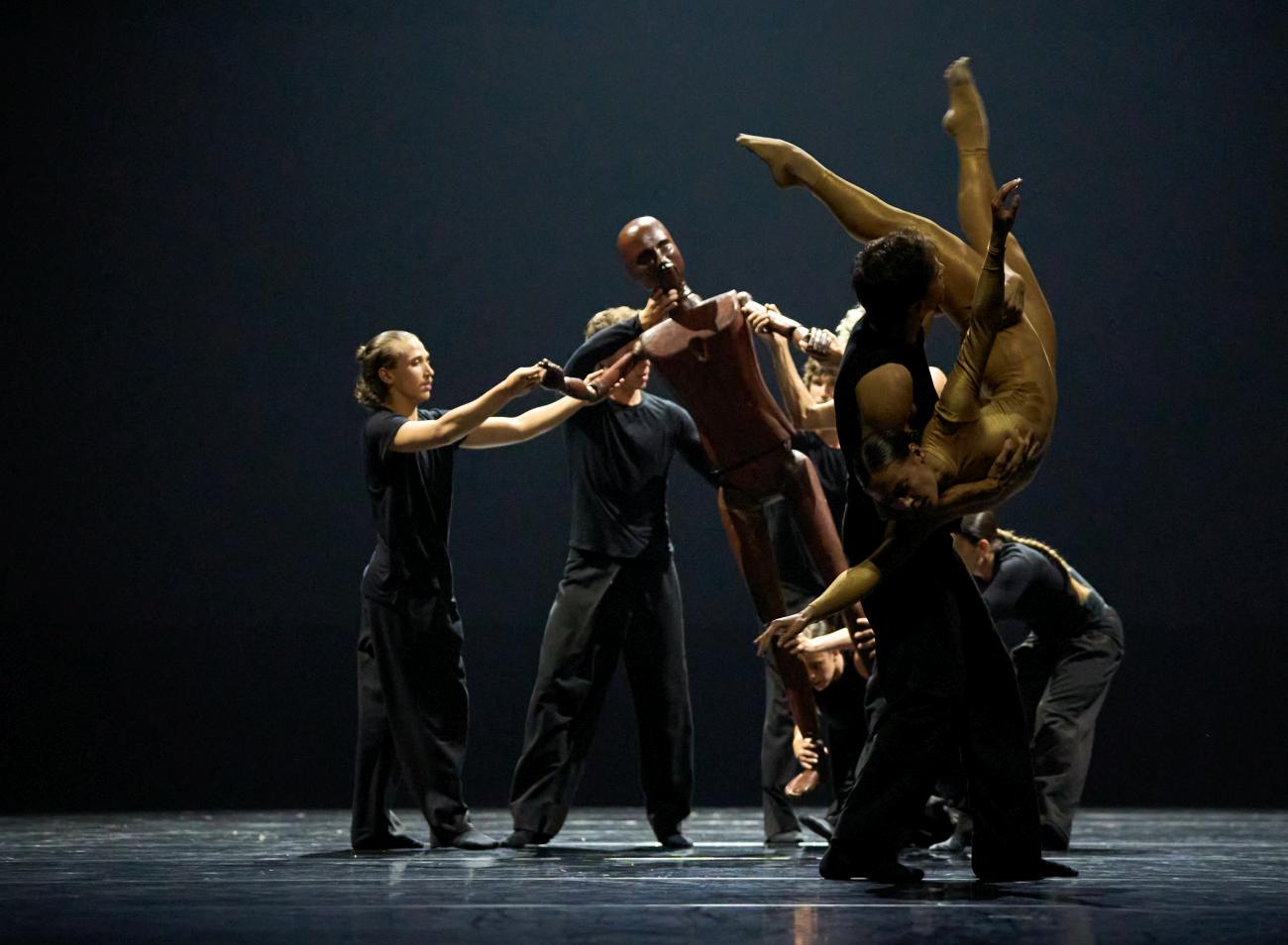
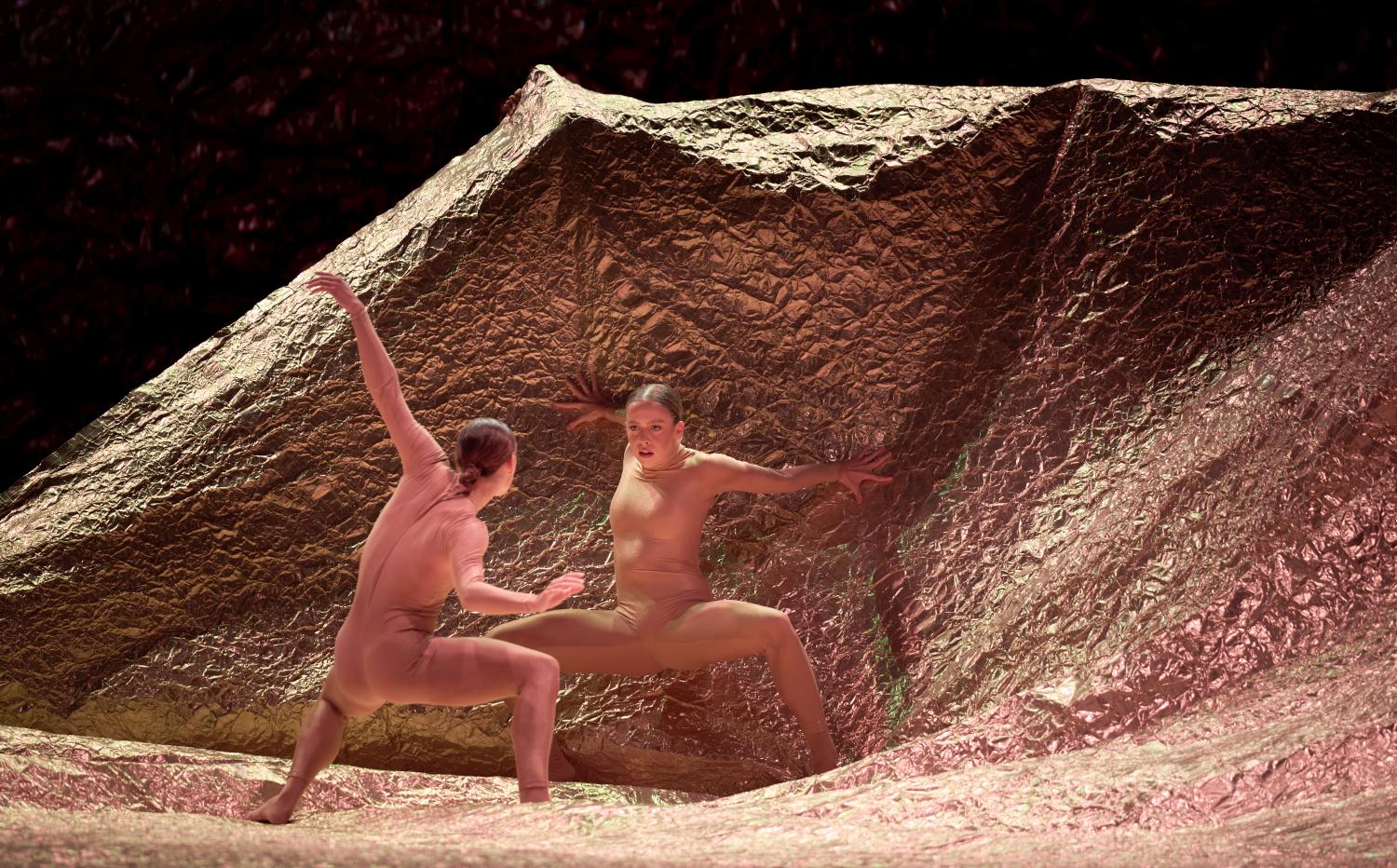 Overall, though, the music created a sense of both serenity and melancholy. Only the scene, Steppenwolf (relating to Montero’s eponymous 2023 choreography), had an aggressive soundtrack. Its text (dealing with “savage deeds,” “hatred,” “decay,” and “death”) was recited by a monotonous computer voice and simultaneously seemed to hurtle toward the audience in huge white letters via a backdrop video. It overshadowed the group dance on the front stage.
Overall, though, the music created a sense of both serenity and melancholy. Only the scene, Steppenwolf (relating to Montero’s eponymous 2023 choreography), had an aggressive soundtrack. Its text (dealing with “savage deeds,” “hatred,” “decay,” and “death”) was recited by a monotonous computer voice and simultaneously seemed to hurtle toward the audience in huge white letters via a backdrop video. It overshadowed the group dance on the front stage.
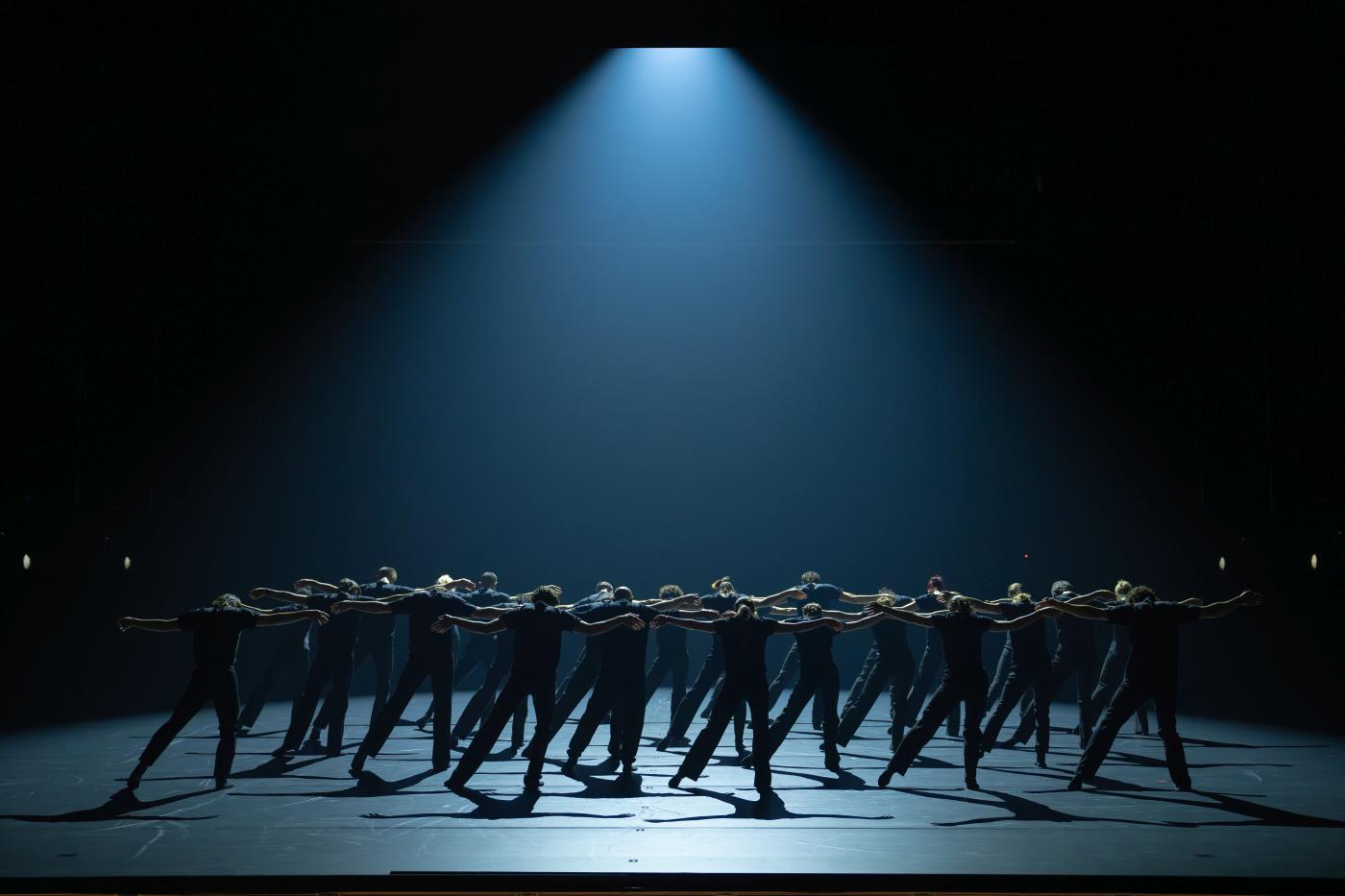
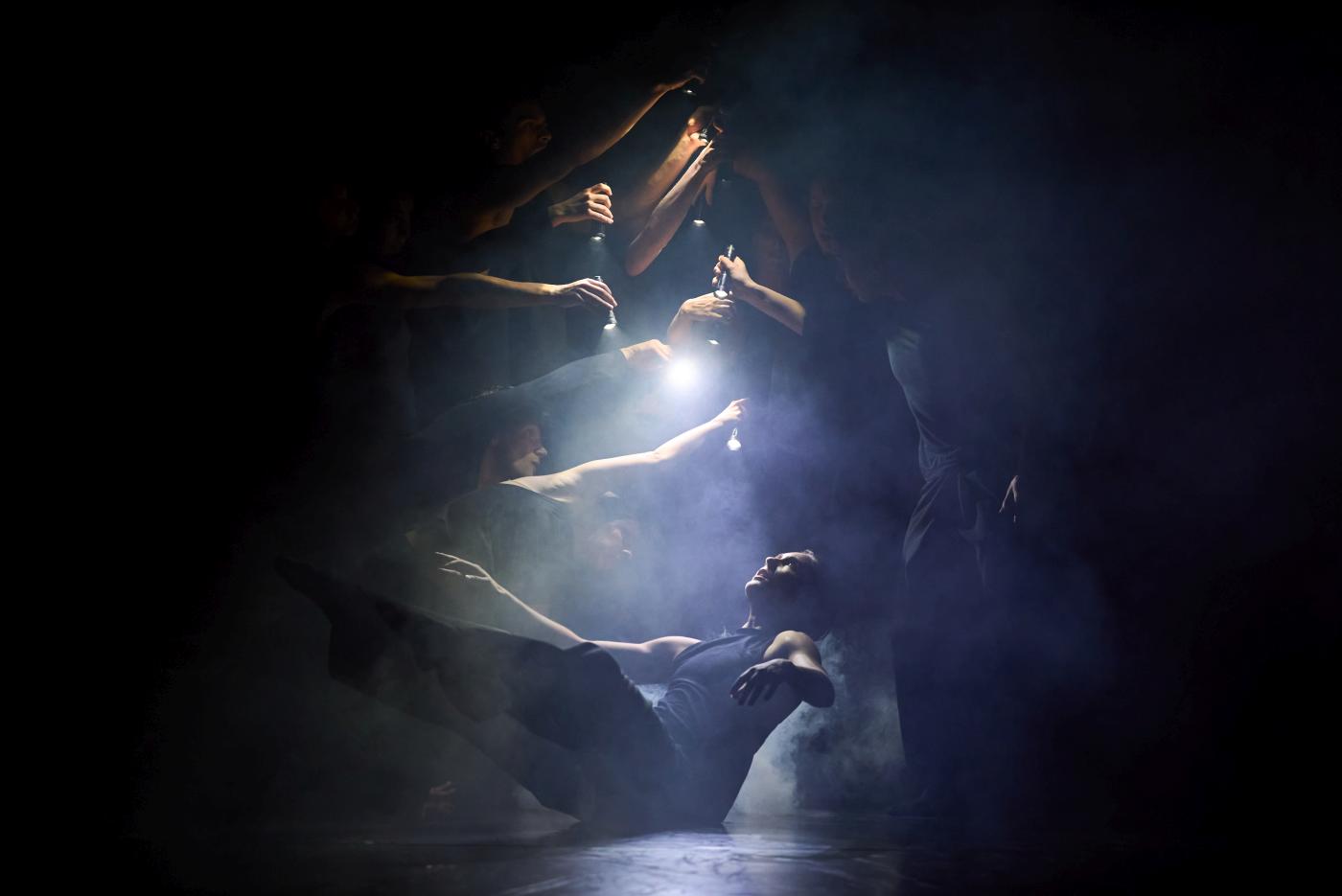 Although I have seen some of Montero’s productions over the past years, I’m not familiar with his oeuvre and hardly recognize the elements he took from earlier works. But given how dense the sixty minutes of Malditos Benditos felt, the references seemed overabundant. For example, I don’t know to which piece the golden rescue blanket belongs, the creased surface upon which a woman in a golden-colored unitard rolled around with relish. Marzellina’s lines from Beethoven’s Fidelio, “Happy I shall be,” affirmed the ballerina’s pleasure. She was filmed by a cameraman on stage, and the video was projected onto the backdrop like in Hans van Manen’s Live. After the crumpled-up blanket had been discarded like trash, a wooden puppet (belonging to Montero’s 2011 Nutcracker) appeared. Some puppeteers made it dance with the ballerina, which reminded me of the puppets in the Stanislavsky Ballet’s new Petrushka.
Although I have seen some of Montero’s productions over the past years, I’m not familiar with his oeuvre and hardly recognize the elements he took from earlier works. But given how dense the sixty minutes of Malditos Benditos felt, the references seemed overabundant. For example, I don’t know to which piece the golden rescue blanket belongs, the creased surface upon which a woman in a golden-colored unitard rolled around with relish. Marzellina’s lines from Beethoven’s Fidelio, “Happy I shall be,” affirmed the ballerina’s pleasure. She was filmed by a cameraman on stage, and the video was projected onto the backdrop like in Hans van Manen’s Live. After the crumpled-up blanket had been discarded like trash, a wooden puppet (belonging to Montero’s 2011 Nutcracker) appeared. Some puppeteers made it dance with the ballerina, which reminded me of the puppets in the Stanislavsky Ballet’s new Petrushka.
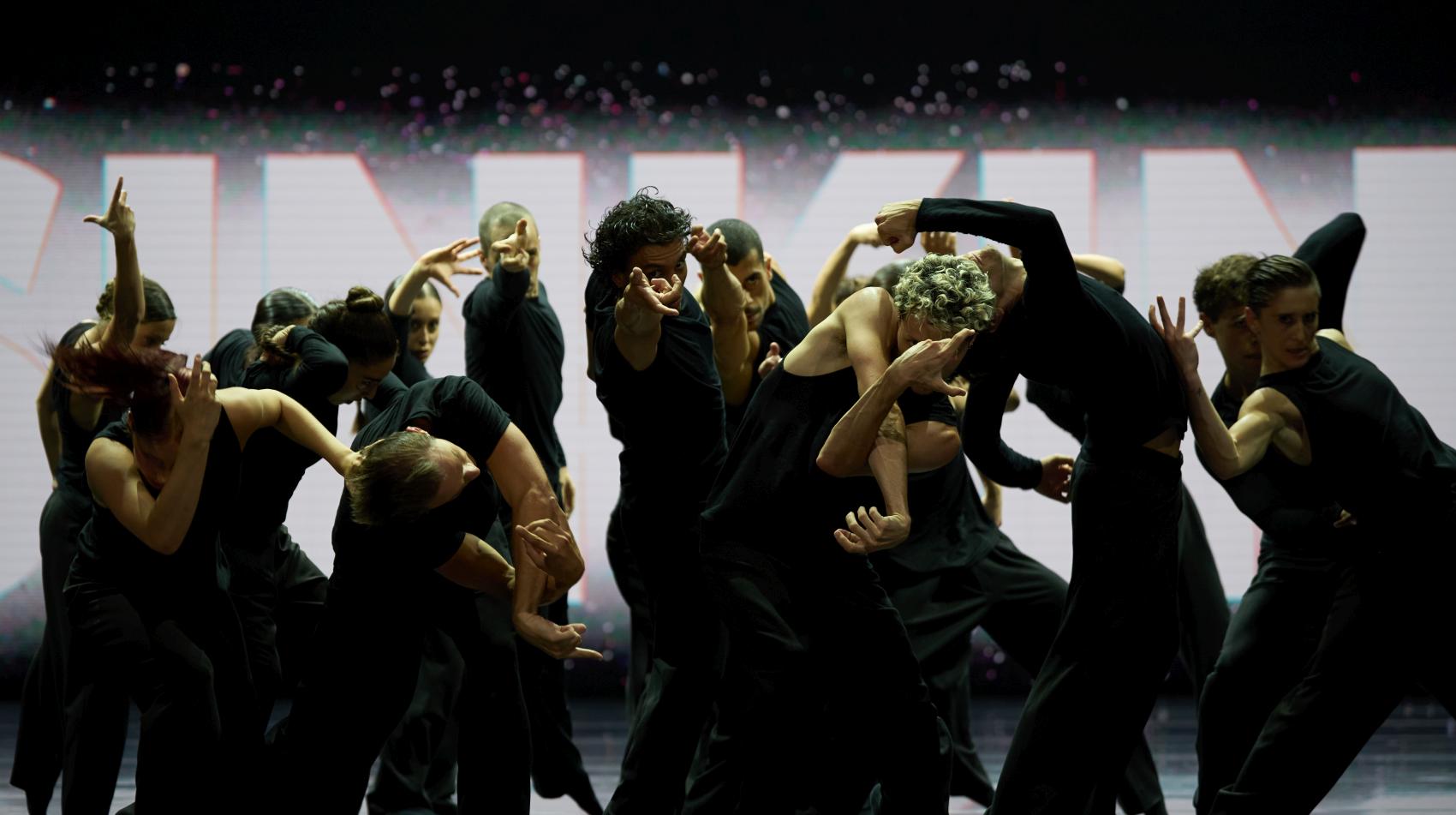
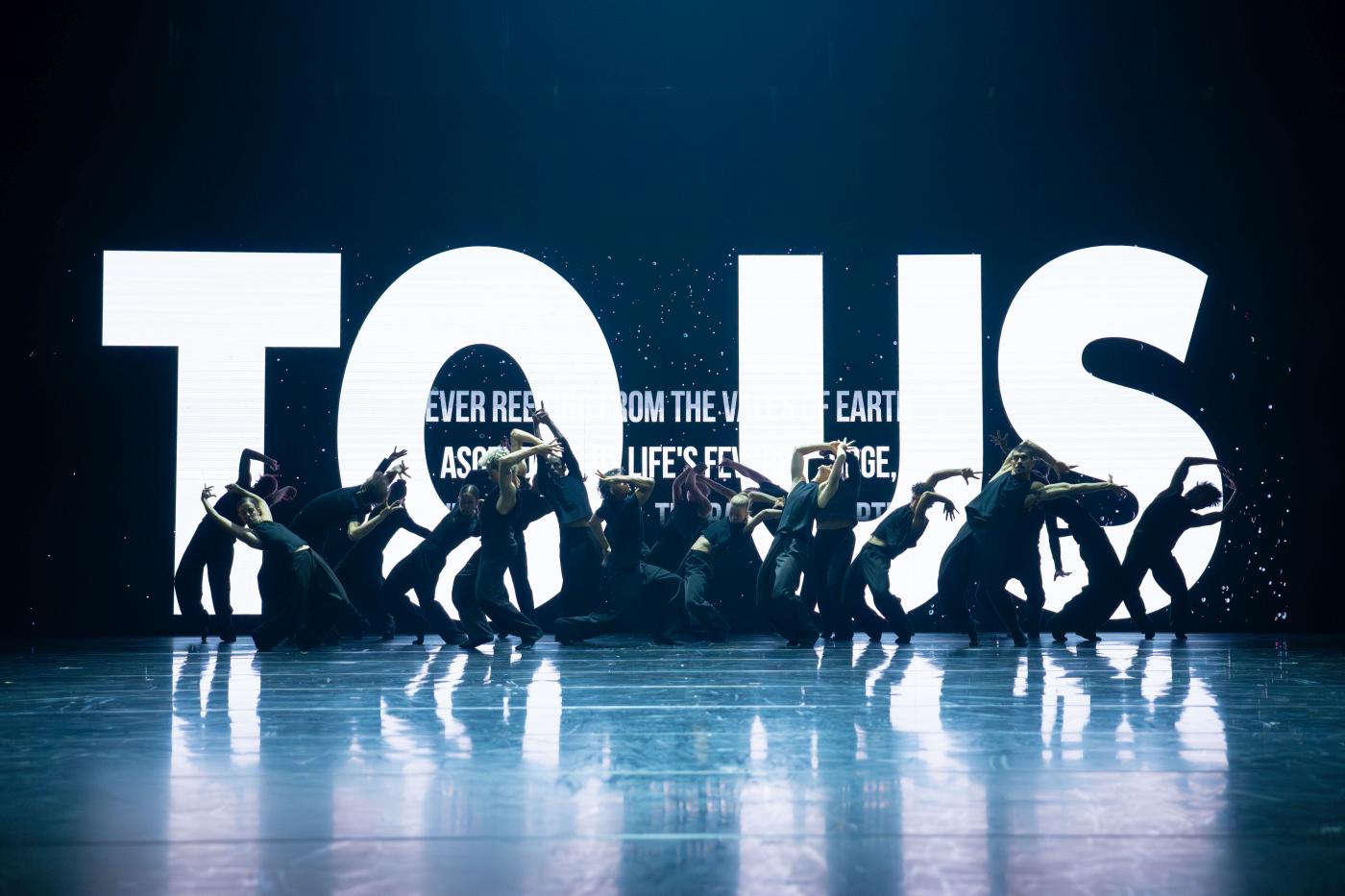 In one scene, the air was tense after two men kissed; mysterious flashlights searched the foggy darkness of another scene. The orange-red window that subsequently opened on the backdrop might have led to hell. Dark colored chairs reappeared again and again. According to Montero, there were three hundred in total, representing the artists and ideas that appeared on Nuremberg’s stage during the past seventeen years. The dancers sat and stood on them, shoved them around, piled them into pyre-like heaps, and played a Trip to Jerusalem-like game. When they sat in a semicircle, their hands smacking their thighs, I couldn’t help but think of Ohad Naharin’s Minus 16.
In one scene, the air was tense after two men kissed; mysterious flashlights searched the foggy darkness of another scene. The orange-red window that subsequently opened on the backdrop might have led to hell. Dark colored chairs reappeared again and again. According to Montero, there were three hundred in total, representing the artists and ideas that appeared on Nuremberg’s stage during the past seventeen years. The dancers sat and stood on them, shoved them around, piled them into pyre-like heaps, and played a Trip to Jerusalem-like game. When they sat in a semicircle, their hands smacking their thighs, I couldn’t help but think of Ohad Naharin’s Minus 16.
Though the scenes sometimes felt like piecemeal, the quality of the dance was consistently high. The dancers’ stage presence was mesmerizing, their dynamic fabulous, and the intensity of their performance gripping. Nuremberg’s audience celebrated them with standing ovations.
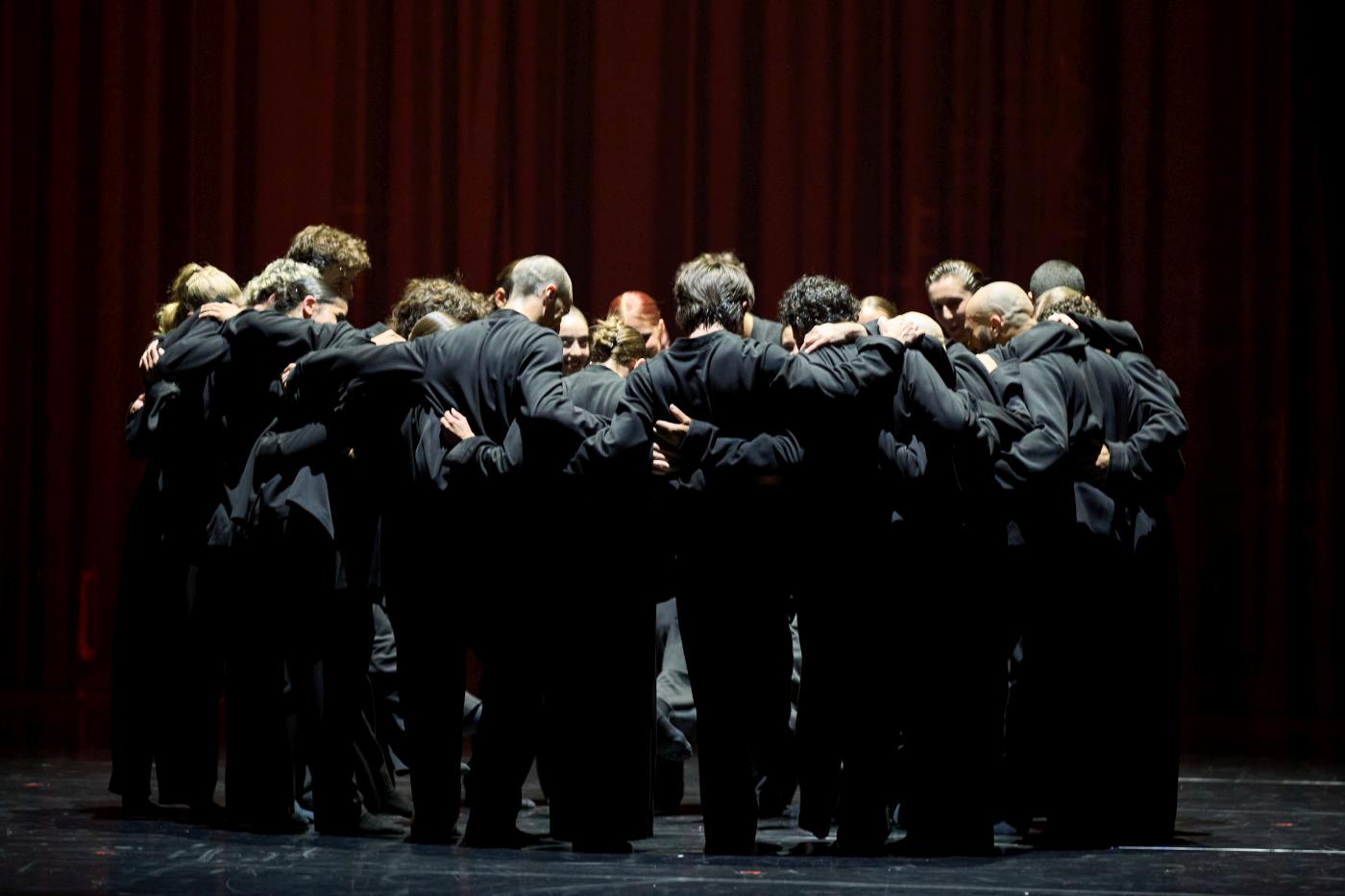
| Links: | Website of the State Theater Nuremberg | |
| “Malditos Benditos” – Trailer | ||
| “Malditos Benditos” – All Ye Whom Love | ||
| Photos: | 1. | Ensemble, “Malditos Benditos” by Goyo Montero, Ballet of the State Theater Nuremberg 2025 © Jesús Vallinas |
| 2. | Ensemle, “Malditos Benditos” by Goyo Montero, Ballet of the State Theater Nuremberg 2025 © Jesús Vallinas | |
| 3. | Goyo Montero and Edward Nunes, “Malditos Benditos” by Goyo Montero, Ballet of the State Theater Nuremberg 2025 © Jesús Vallinas | |
| 4. | Goyo Montero and Theo Montero, “Malditos Benditos” by Goyo Montero, Ballet of the State Theater Nuremberg 2025 © Carlos Quezada | |
| 5. | Theo Montero and ensemble, “Malditos Benditos” by Goyo Montero, Ballet of the State Theater Nuremberg 2025 © Carlos Quezada | |
| 6. | Alisa Uzunova and Elliana Mannella, “Malditos Benditos” by Goyo Montero, Ballet of the State Theater Nuremberg 2025 © Carlos Quezada | |
| 7. | Giuseppe Schillaci, Camryn Pearson, John Hackett, Mariana Vieira, Jay Ariës, and Alisa Uzunova; “Malditos Benditos” by Goyo Montero, Ballet of the State Theater Nuremberg 2025 © Carlos Quezada | |
| 8. | Ensemble, “Malditos Benditos” by Goyo Montero, Ballet of the State Theater Nuremberg 2025 © Jesús Vallinas | |
| 9. | Stella Tozzi and ensemble, “Malditos Benditos” by Goyo Montero, Ballet of the State Theater Nuremberg 2025 © Carlos Quezada | |
| 10. | Ensemble, “Malditos Benditos” by Goyo Montero, Ballet of the State Theater Nuremberg 2025 © Jesús Vallinas | |
| 11. | Ensemble, “Malditos Benditos” by Goyo Montero, Ballet of the State Theater Nuremberg 2025 © Carlos Quezada |
|
| 12. | Ensemble, “Malditos Benditos” by Goyo Montero, Ballet of the State Theater Nuremberg 2025 © Carlos Quezada | |
| Editing: | Kayla Kauffman |
